Happy New Year everyone and welcome to 2024! Let’s continue with my promised article on the beautiful, incredible, aspirational & unobtainable Sansui BA-5000 power amplifier.
You may recall that I teased this spectacular amplifier and new addition to my customer Rob’s collection at the end of 2023 and, true to my word, I didn’t want this article to slip into “I’ll get to it years later” territory, so here it is. Here’s hoping this year is a great one for all my readers and let’s dive straight into this stunning and very rare piece of equipment.
As always, if you enjoy this type of content, please like, comment, share and subscribe. You can even buy me a drink if you enjoy reading unique content like this and appreciate the many hours or days that go into creating each article!

Background
OK, so what’s so good about the Sansui BA-5000 power amplifier you ask, and maybe what IS a power amplifier? Fair questions. A power amplifier does all the heavy lifting and speaker-driving duties in a hi-fi system. Power amplifiers take signals from preamplifiers and boost them to a higher voltage, whilst also lowering output impedance to deliver more current, so they can move serious air, via the loudspeakers. Preamplifiers take the tiny signals and amplify and ‘condition’ them before feeding them a power amplifier.
The best way to build hi-fi gear is to separate things according to function. The best way to build amplifiers is to separate the small and large signal functions, hence pre, and power amplifiers. I’ve written about how to improve your amplification and one tried and tested way is simply to move from integrated to separate pre and power amplifiers. By doing so you keep the small and large signal stuff separate, you have the chassis, internal layout and power supplies optimised for fewer jobs and you get the best results. this is why the best amplifier solutions are always pre/power combos, with no exceptions.
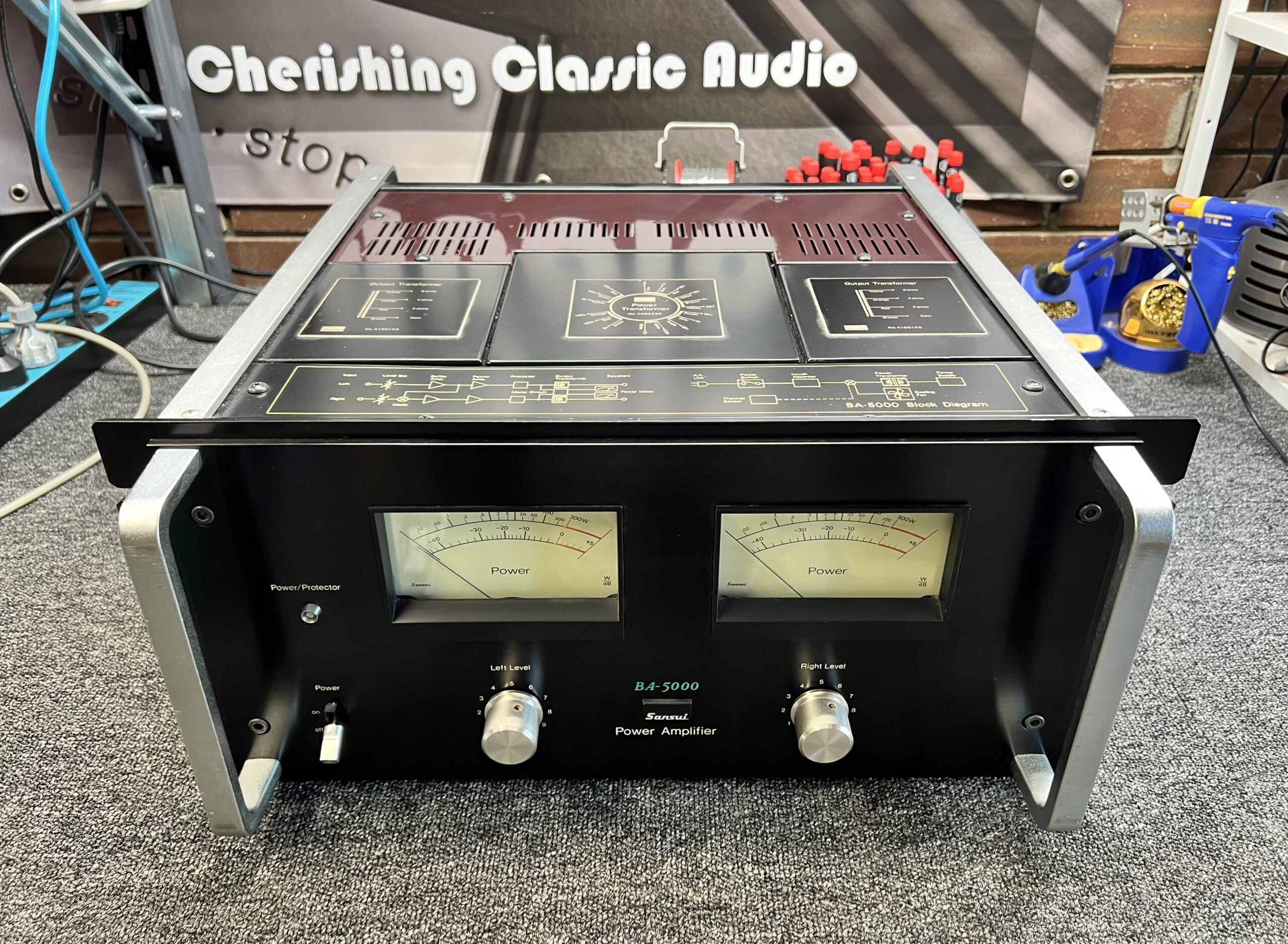
The BA-5000 is arguably Sansui’s best-ever power amplifier, certainly one of their best. There is hardly any argument from sensible, informed folks that this 50kg monolith puts many or even most other serious attempts to shame. It’s fair to state that this is one of the greatest power amplifiers, from the golden age, engineered and made in Japan, with love and few compromises. It compares favourably with anything you might consider from this era and of course, kills a lot of wannabe ‘high-end’ boutique and plastic gear you can buy now.
In my opinion, the BA-5000 puts most other Sansui offerings in the shade, including the legendary AU-X1, AU-X11, BA-F1 and later amplifiers from beyond Sansui’s peak. We can test this theory by asking Rob about it, seeing as he owns examples of all these pieces, and we will. It also casts shade on most other amplifiers, period!
“Mike, what about the legendary Sansui B-2301?” I’m familiar with this model, it’s very good, though not as heavy at a ‘mere’ 37kg (still Mr Universe mass by modern standards). It sounds great, but so does this and this has less plastic and moving coil meters that can be repaired. Either way, once you’ve heard a big, discrete power amplifier like the BA-5000, you can’t go back. The scale and drama a piece like this delivers, sonically and aesthetically, are in another league.
Design & Features
The obvious features are the flag-bearing 300 Watts per channel into any load, thanks to the multiple-tapped output transformers. Transformers are another way of coupling an amplifier’s output stages to the speakers and are often seen in valve amplifiers where high voltage and lower current tube outputs need to be ‘transformed’ into more useful, lower voltages and higher current to be able to drive speaker voice coils. They are much less common in solid-state designs because transistors can deliver the current needed to drive voice coils directly.
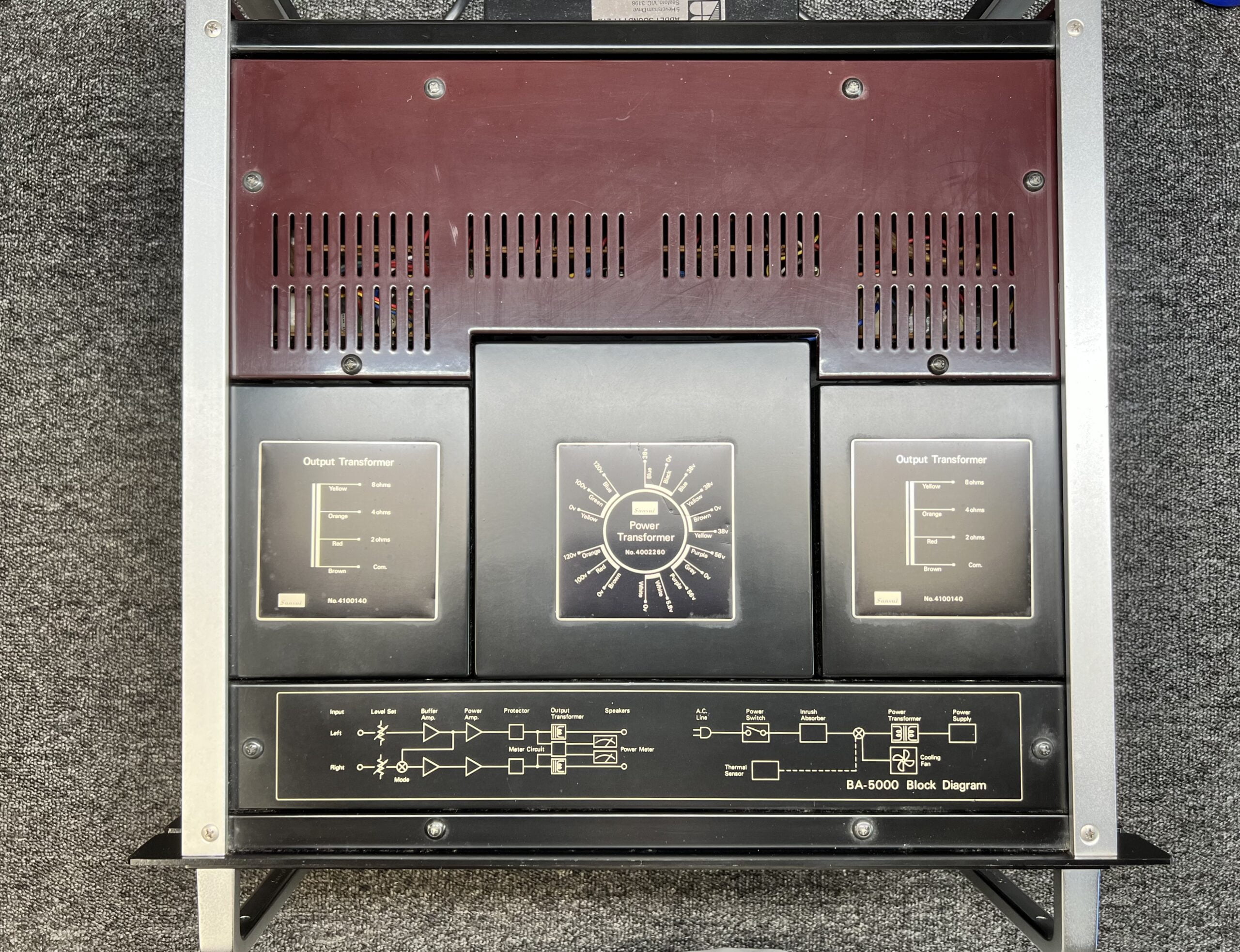
Transformer coupling has advantages and disadvantages, though done well, mostly advantages. Transformers magnetically and inductively couple the output devices to the load. They therefore also isolate the speaker terminals from the output devices and cannot pass dangerous, speaker-toasting DC voltages. Transformers also facilitate a near-perfect match for speakers of all impedances by their multi-tapped design, maximising efficiency.
On the flip side, transformers offer a relatively high output impedance, creating theoretical power-bandwidth limitations and a degree of performance variability with different types of loads, particularly complex reactive ones. Transformers are also AC filters (low pass, if you are interested) so they ‘shape’ the signal to some extent and this will impact the sound. How exactly is variable and heavily dependent on the transformer design.
None of the potential negatives of transformers matter of course if the amplifier runs and performs well into normal speaker loads, and that’s ultimately what we are interested in. Great transformers like those used here will be blameless and likely sound even better than conventional direct-coupled designs. McIntosh has been doing things this way with output transformers in solid-state amplifiers for a long time, and it seems to work well for them.
Ultimately, we can talk about the potential downsides of transformer coupling all day long, but if the amplifier sounds unbelievably good, should you care? Of course not. As with all hi-fi equipment, you need to hear one of these amplifiers in your set-up to determine if it’s right for you, rather than just read about it.
Beyond this are two beautiful moving coil power meters, attenuators on the front panel to help with fine balance adjustments, a huge mains transformer with separate left and right channel windings and four very large filter capacitors. Oh, and it’s very serviceable, with everything readily accessible, a huge advantage. That’s it for the features, it’s a power amplifier.
Sansui BA-5000 Specifications
Thanks to the legends at Hi-Fi Engine
Power output: 300 watts per channel into 8Ω (stereo), 600 watts into 8Ω (mono) (Yes, seriously)
Frequency response: 15Hz to 30kHz
Total harmonic distortion: 0.1%
Damping factor: 10 (A tradeoff with output transformers, but this thing sounds so good you won’t care)
Input sensitivity: 0.7V
Signal-to-noise ratio: 100dB
Speaker load impedance: 2Ω to 8Ω – this will comfortably drive any normal speakers
Dimensions: 482 x 222 x 466mm
Weight: 49kg – again, WOW
Year: 1976
Problems
This beautiful Sansui BA-5000 was acquired towards the end of 2023 by my ‘owner of all the great Sansuis’ customer Rob, along with a matching Sansui CA-3000 which also needs work and I will write about later this year. Despite being sold as working perfectly by her very nice owner, there were obvious issues with both when they arrived.

The original owner may not have been aware of the issues with the BA-5000 in this case. They may not have been present at the time of sale, instead perhaps induced by the stress of transport, which can happen. We may never know, but we do know that, upon power on and protection circuit release, this Sansui BA-5000 exhibited a loud rushing, hissing white noise in one channel. This was invariable with volume adjustment or attenuation, which is a nice clue. The amplifier also sounded dull, distorted and nowhere near what Rob was expecting.
Further testing revealed an unstable output device bias current in the problem channel that jumped around alarmingly and threatened the ongoing survival of the amplifier. As I’ve said many times, driver-stage health is critical to amplifier health and issues like this must be resolved, properly and definitively. Additional problems included dirt, loose meter bezels, loose fasteners everywhere including the output devices and the need for typical age-related maintenance.
So, the issue summary:
- White noise and distortion in one channel
- Poor sound from both channels
- Crazy bias instability
- Problems with the fascia and meters
- Need for deep maintenance and at least partial overhaul
Repair & Overhaul
Solving the issues with this wonderful BA-5000 required the usual, careful, logical approach to fault finding, repair and maintenance, and generally giving this old girl the attention she needed, after nearly five decades! She’d been worked on before, by a company called Abbey Sound in Melbourne, originally from NZ. Some connectors had been removed and replaced by soldered joints that I had to work around, but that seems to be just about all that was done, thankfully. Spoiler alert: this was even worse in the CA-3000.
Let’s go and, as always, you can watch the accompanying video here, once it’s ready.
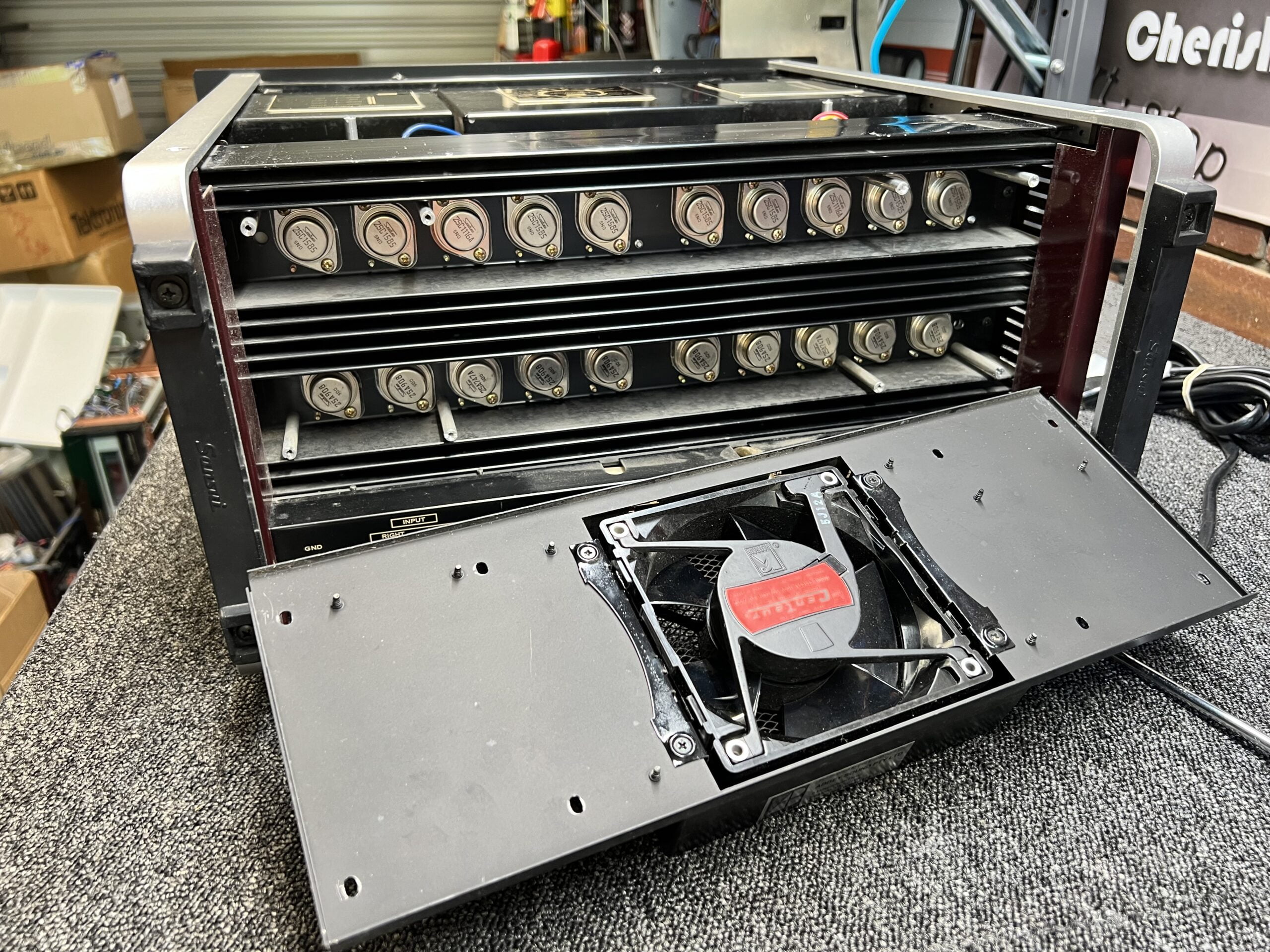
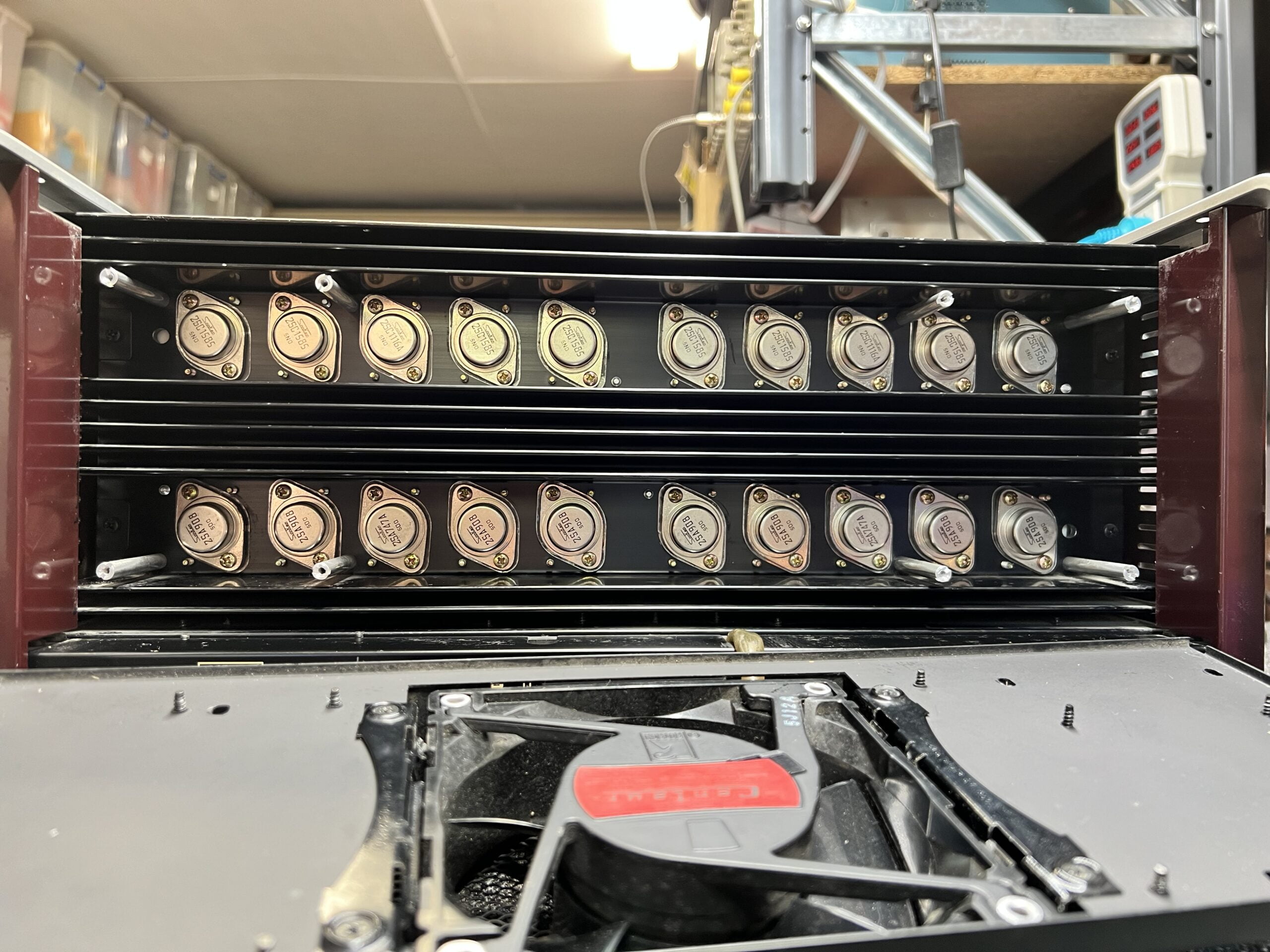
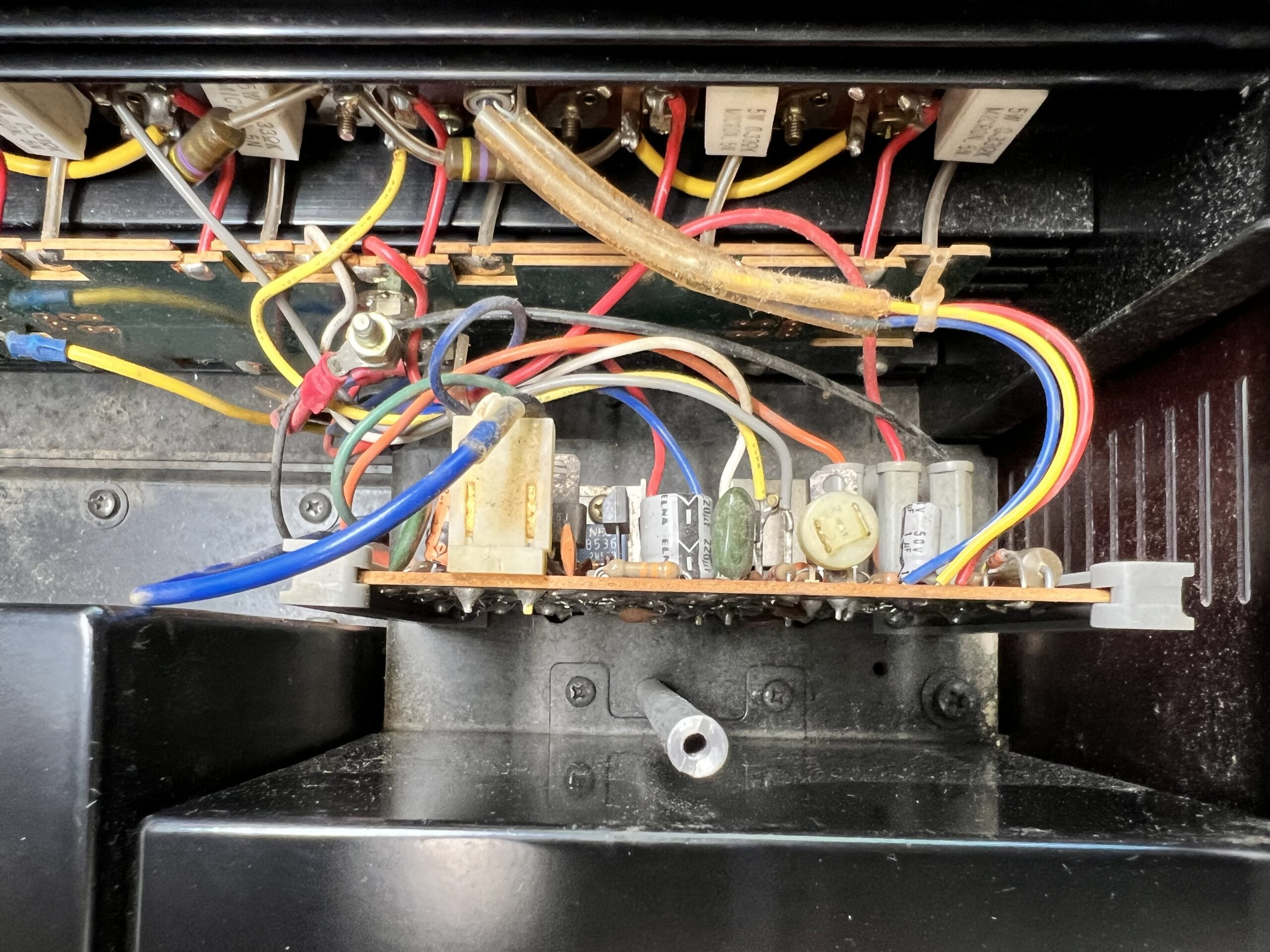
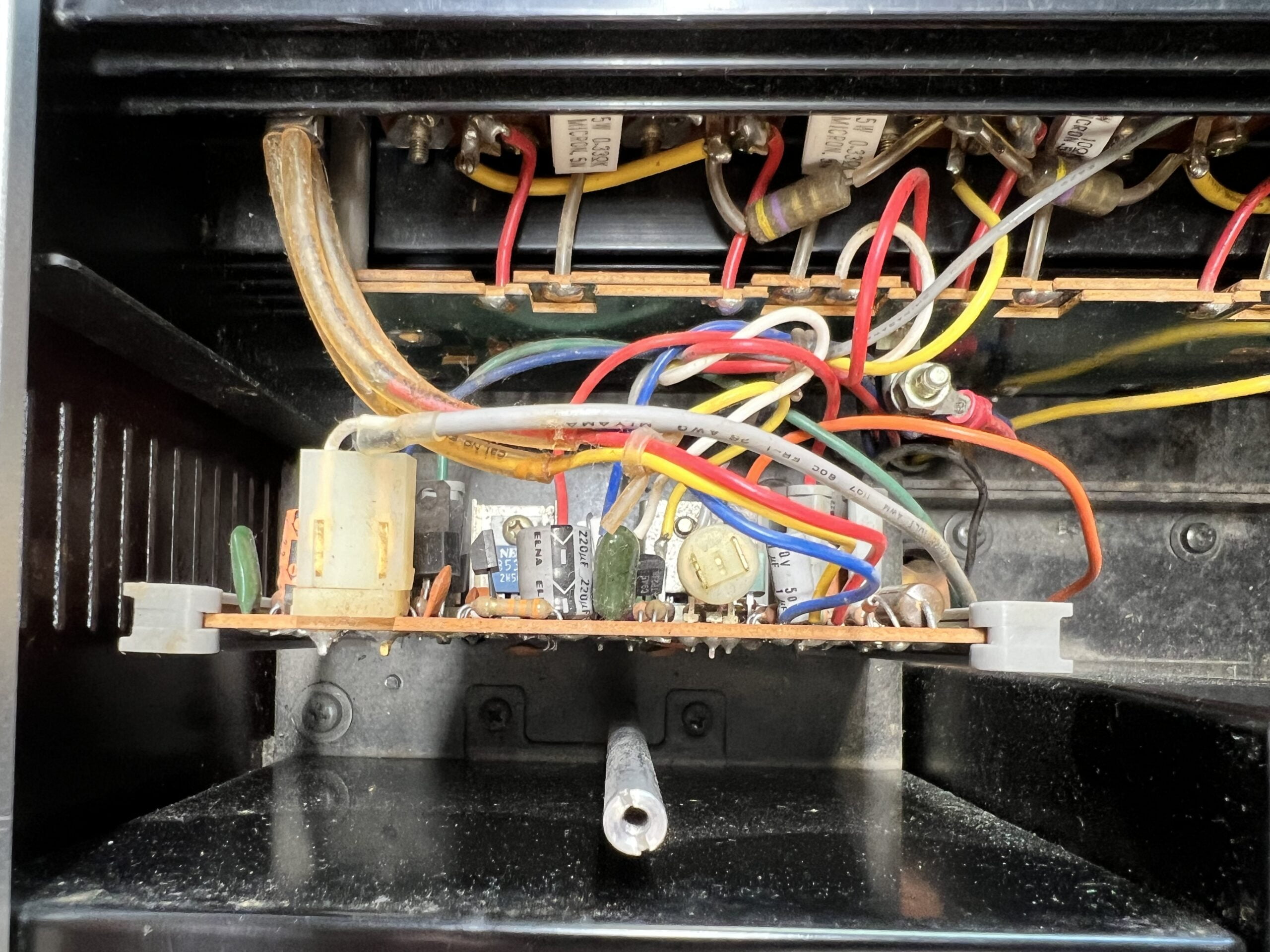
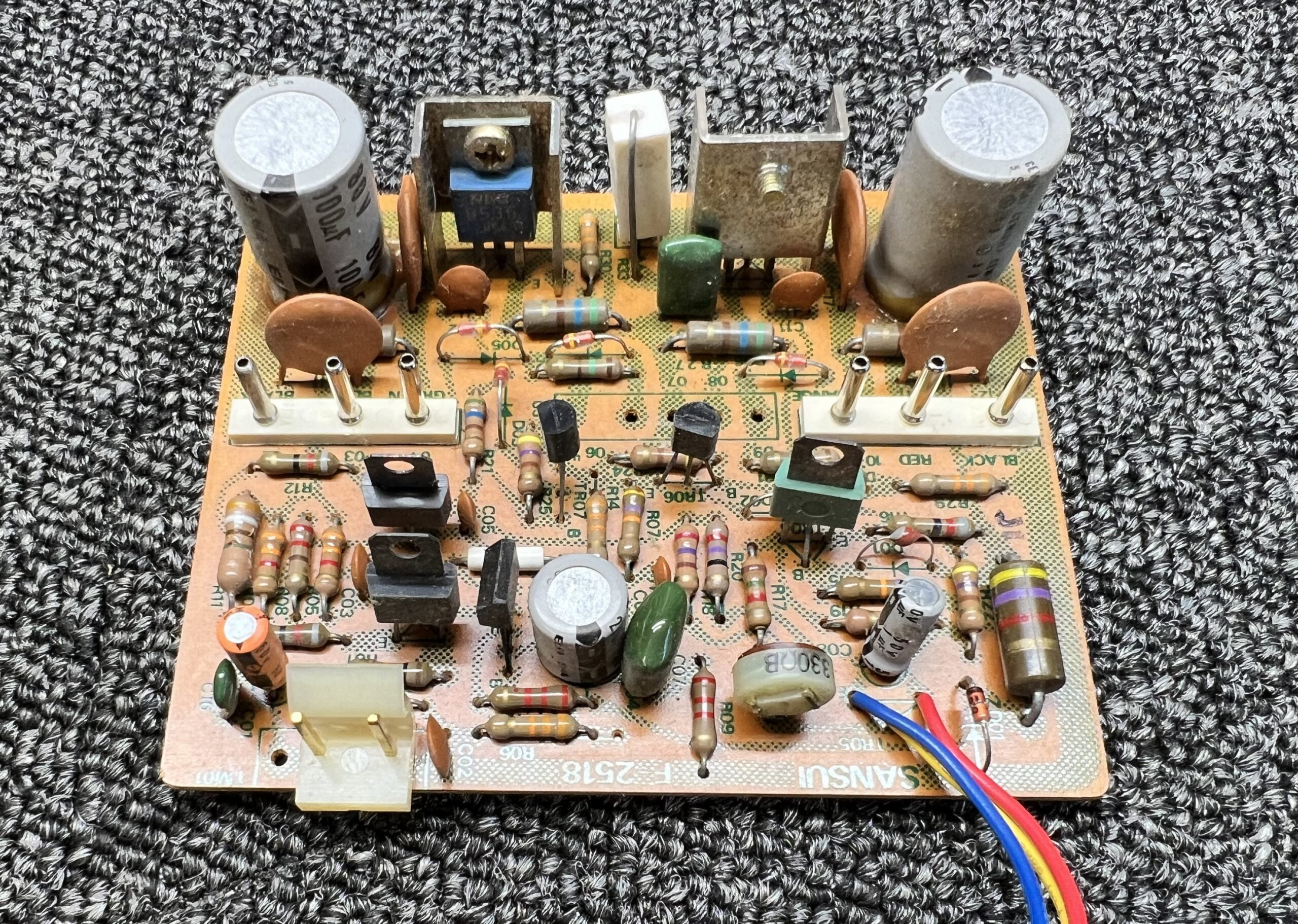
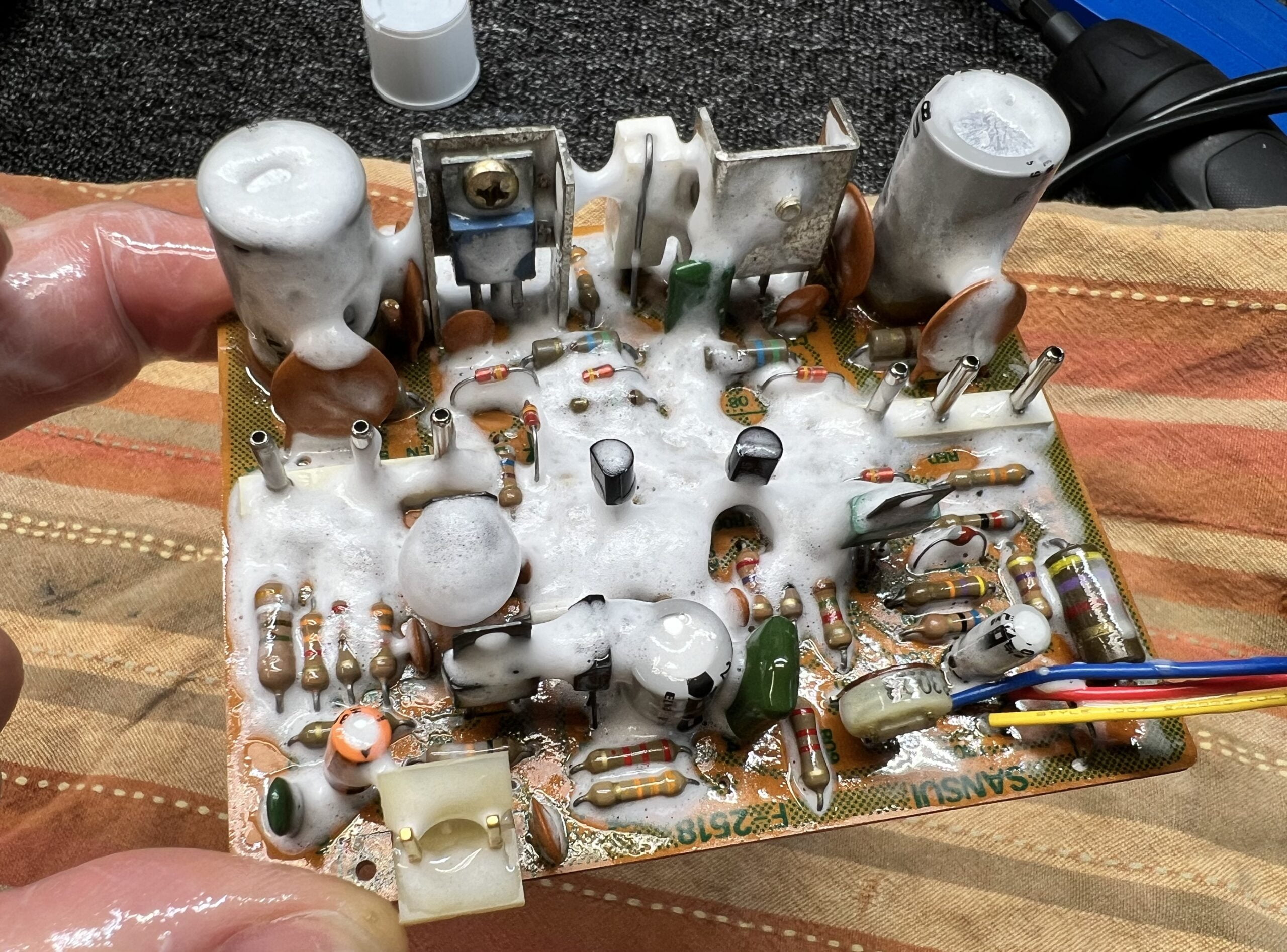
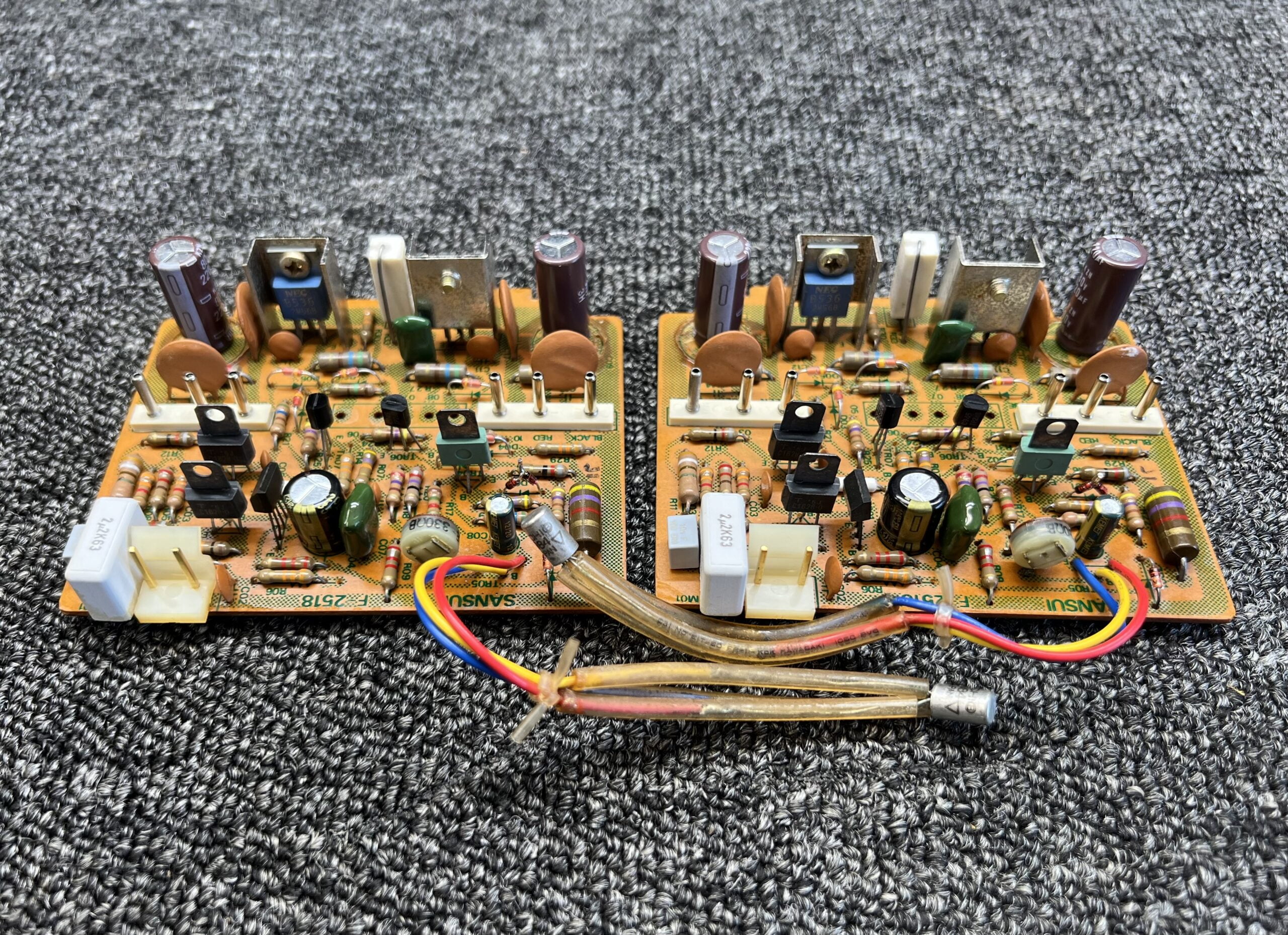
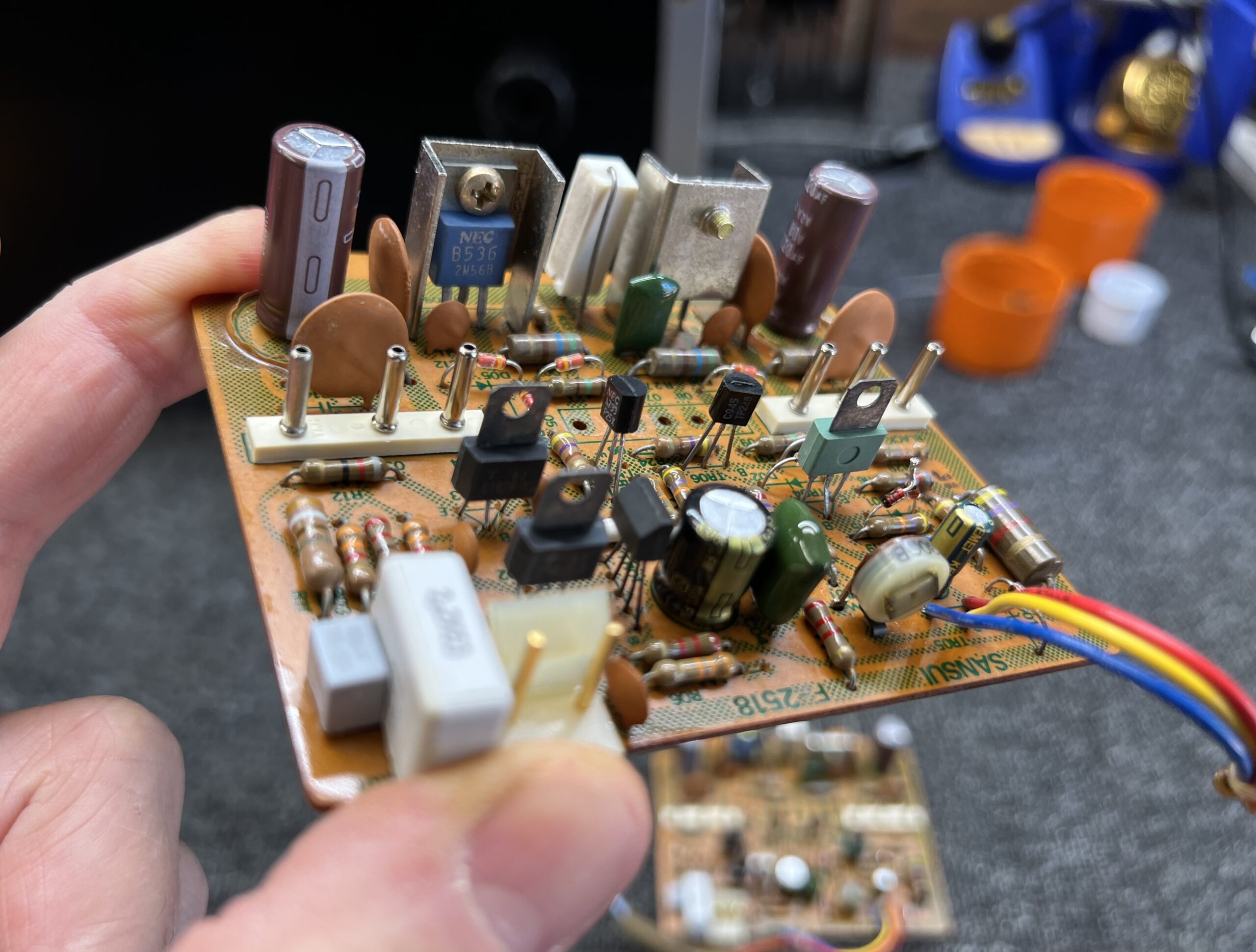
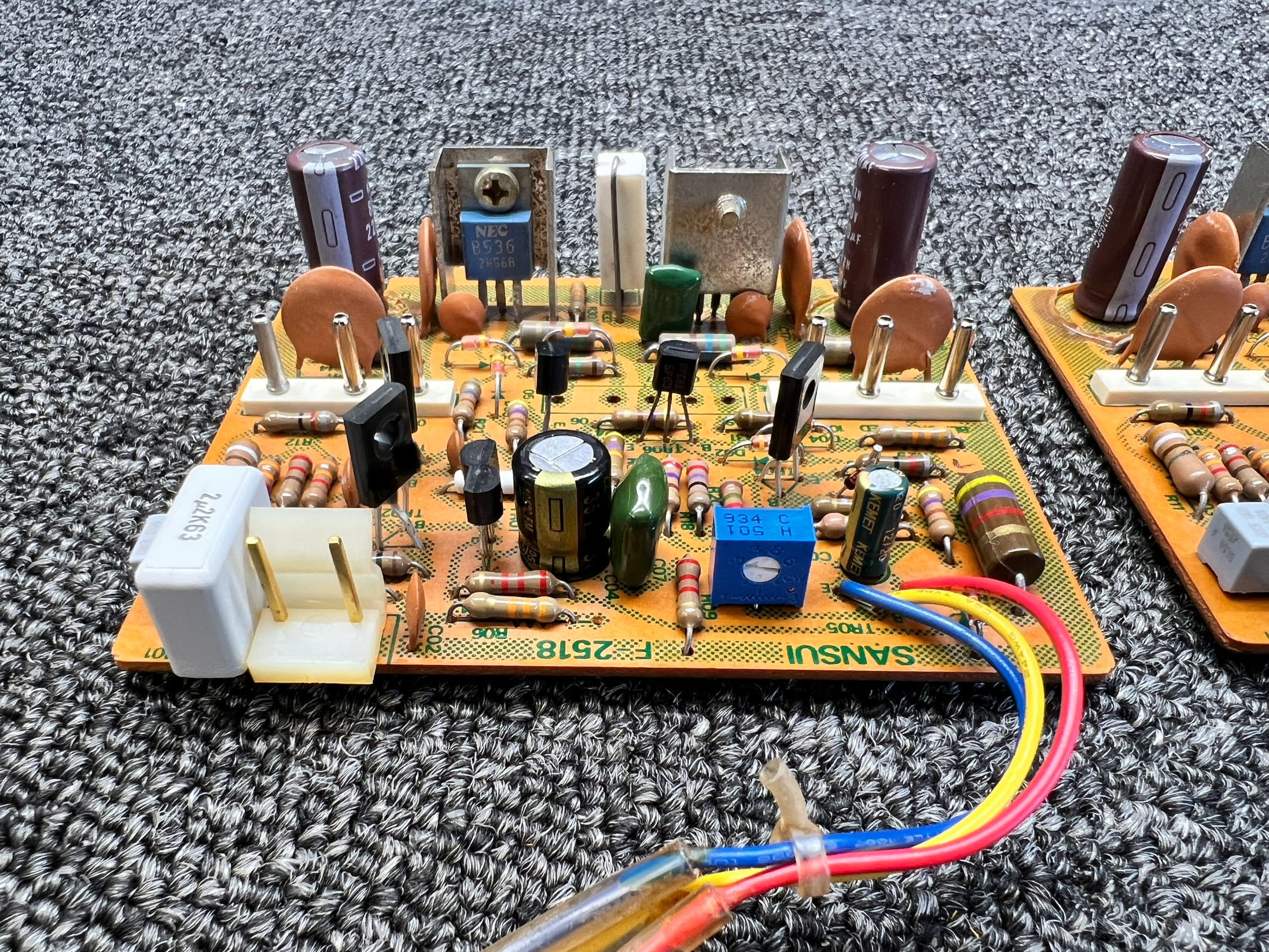
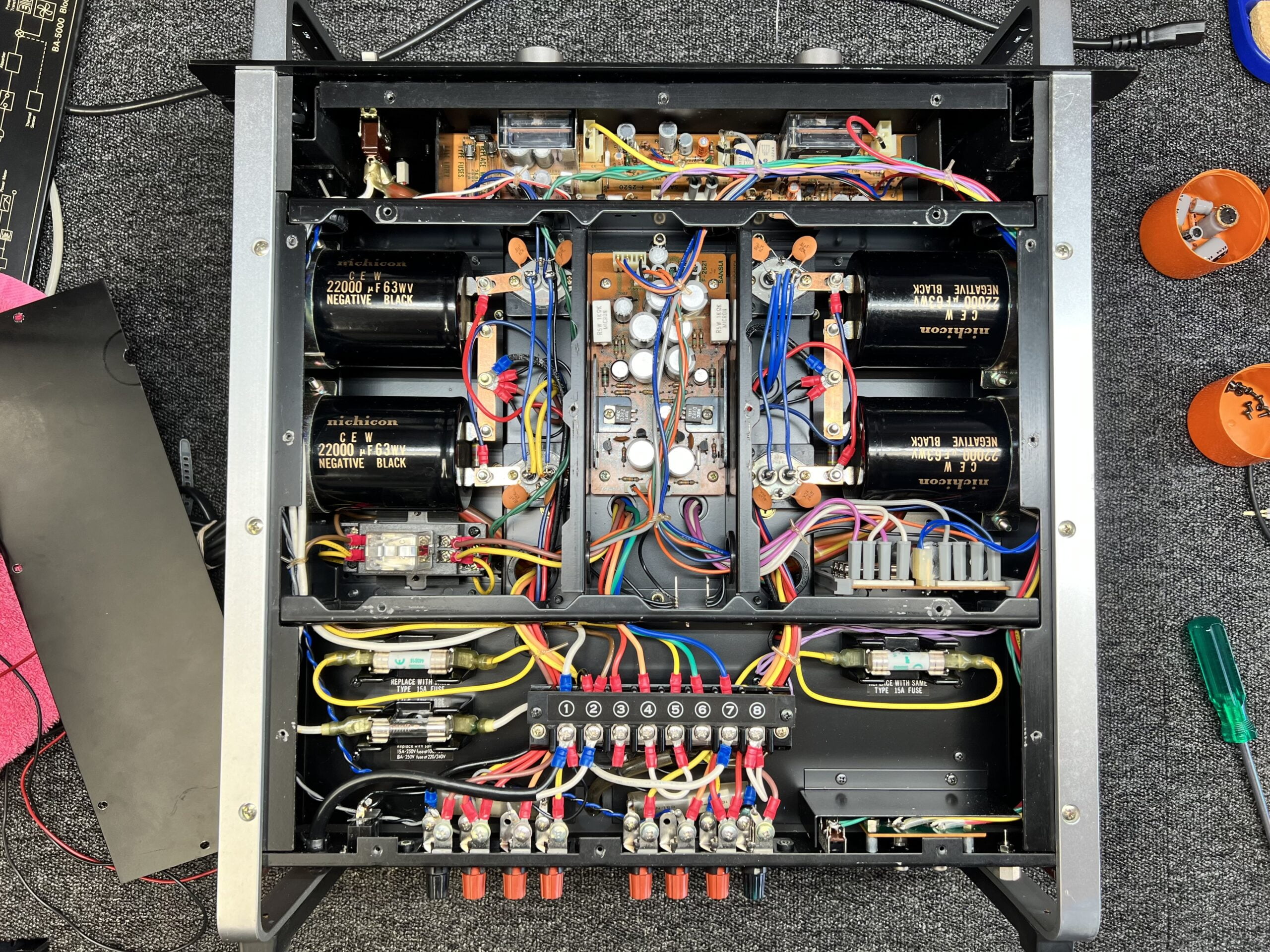
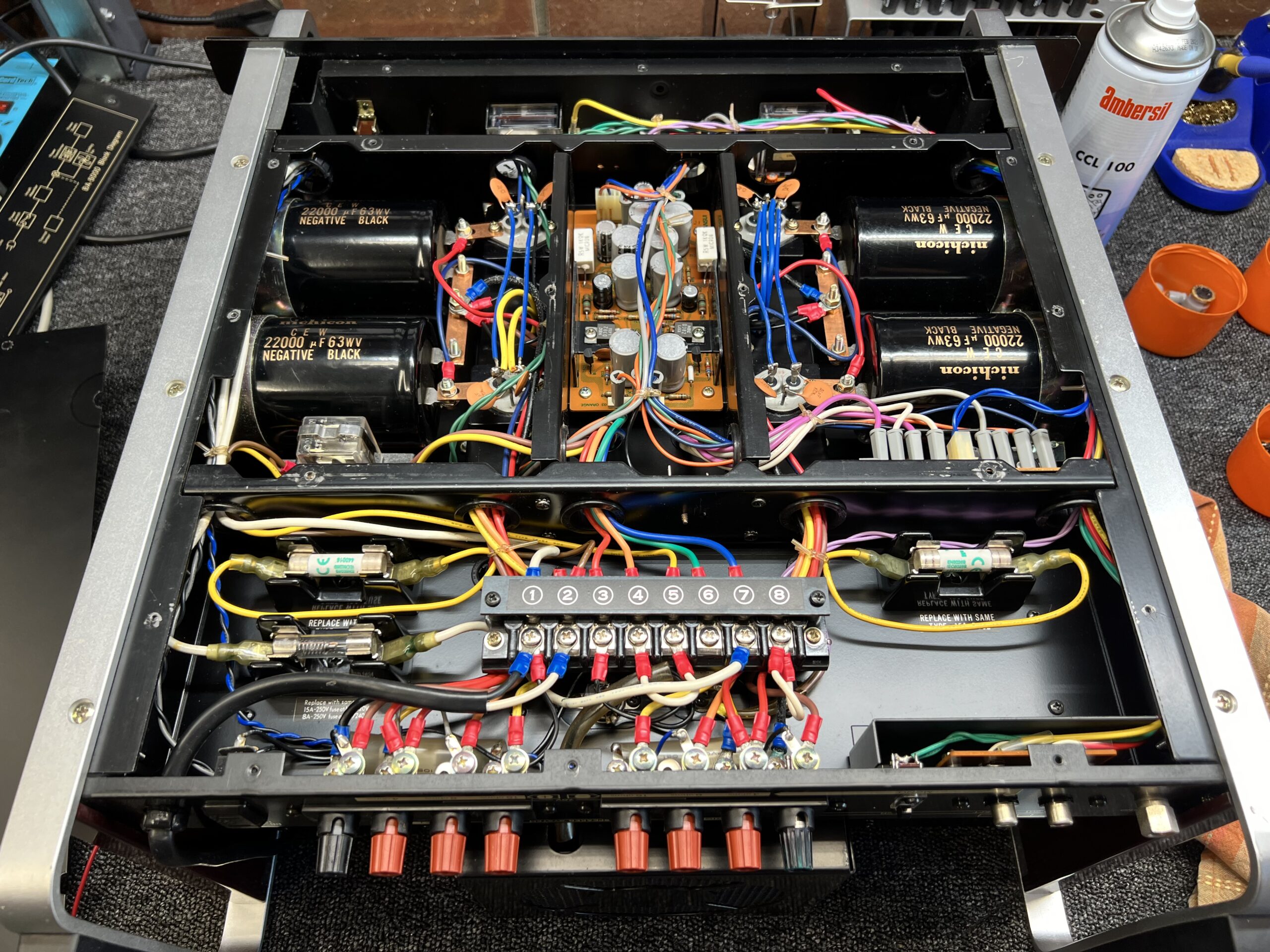
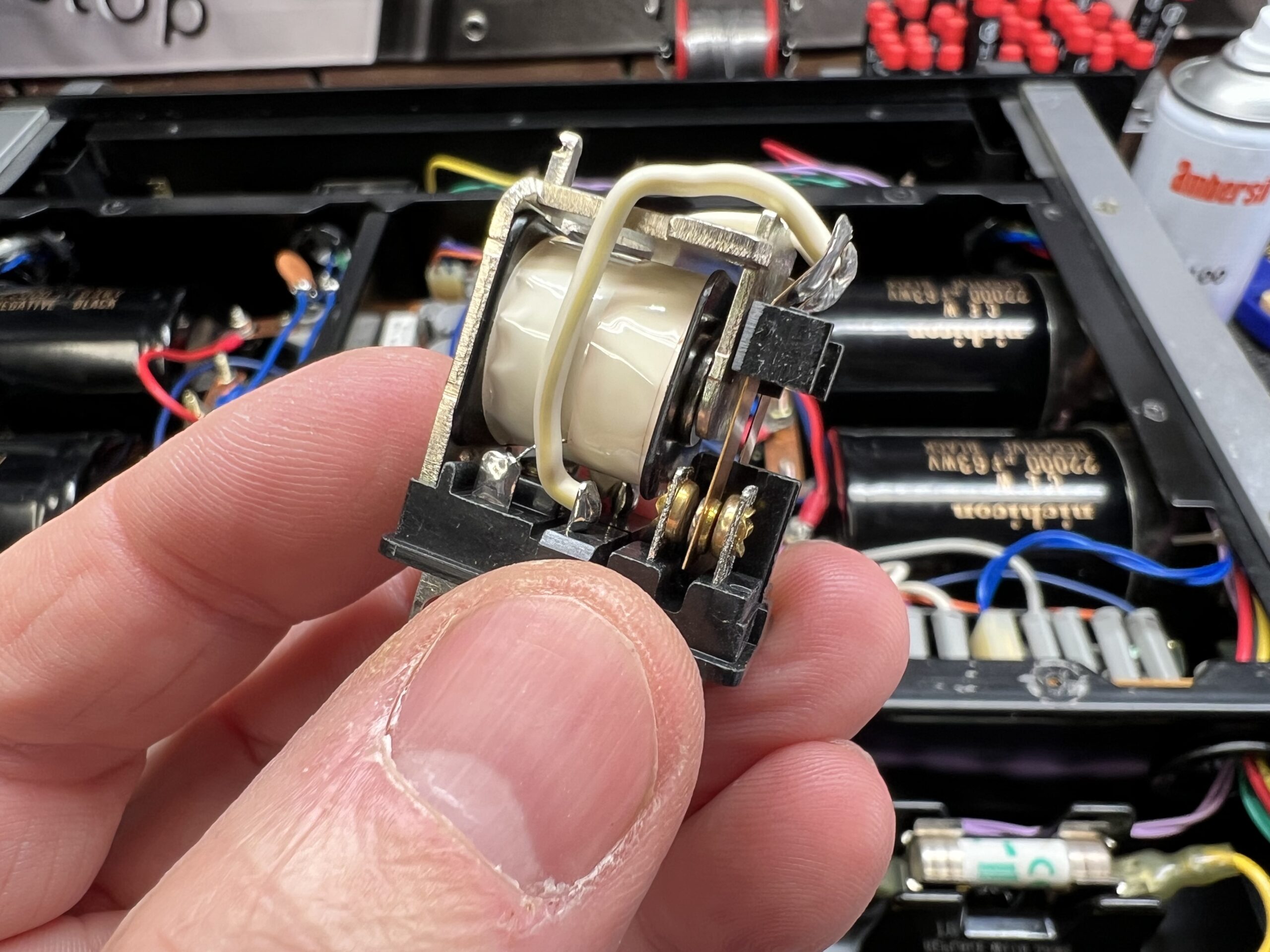
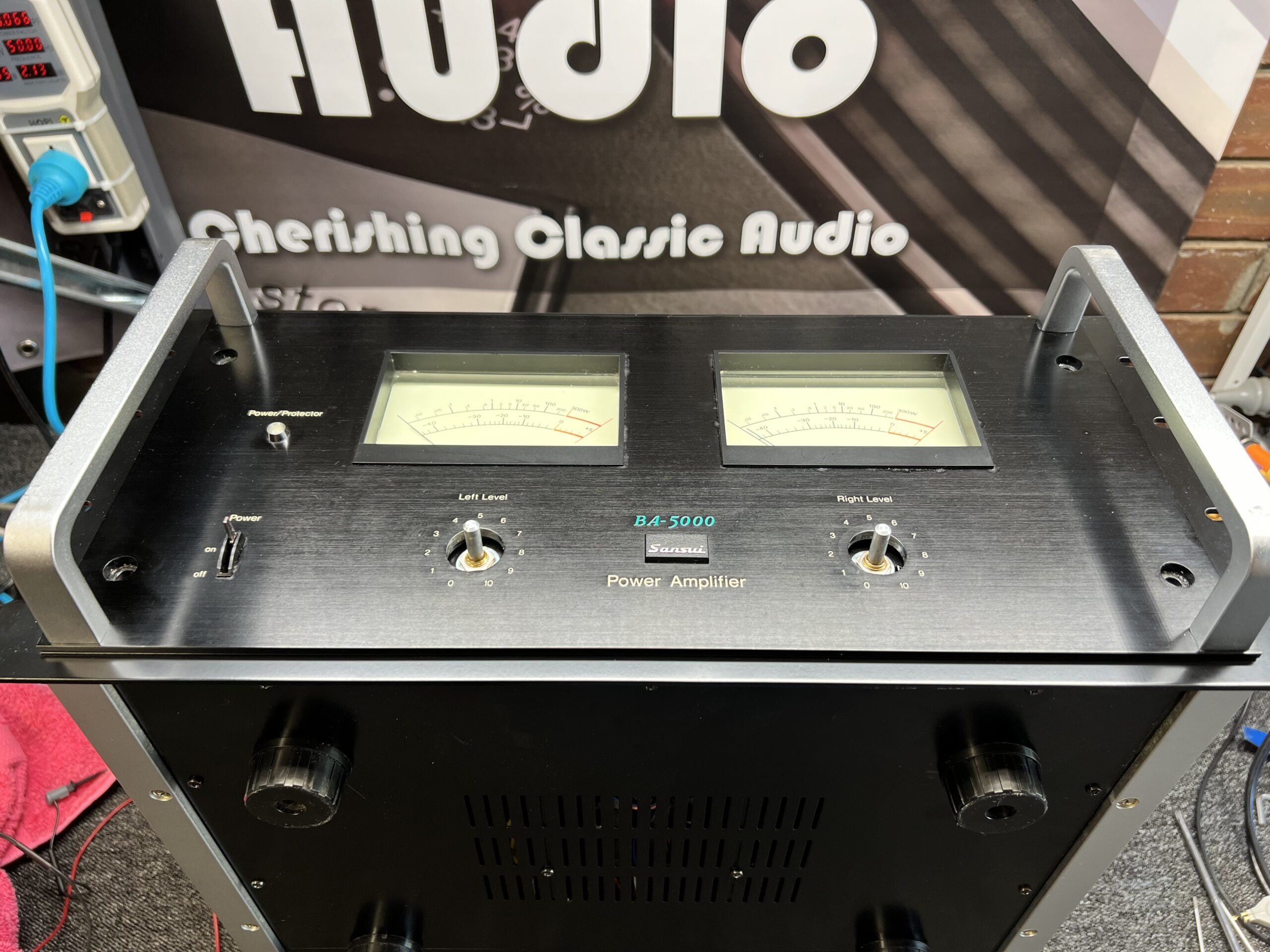

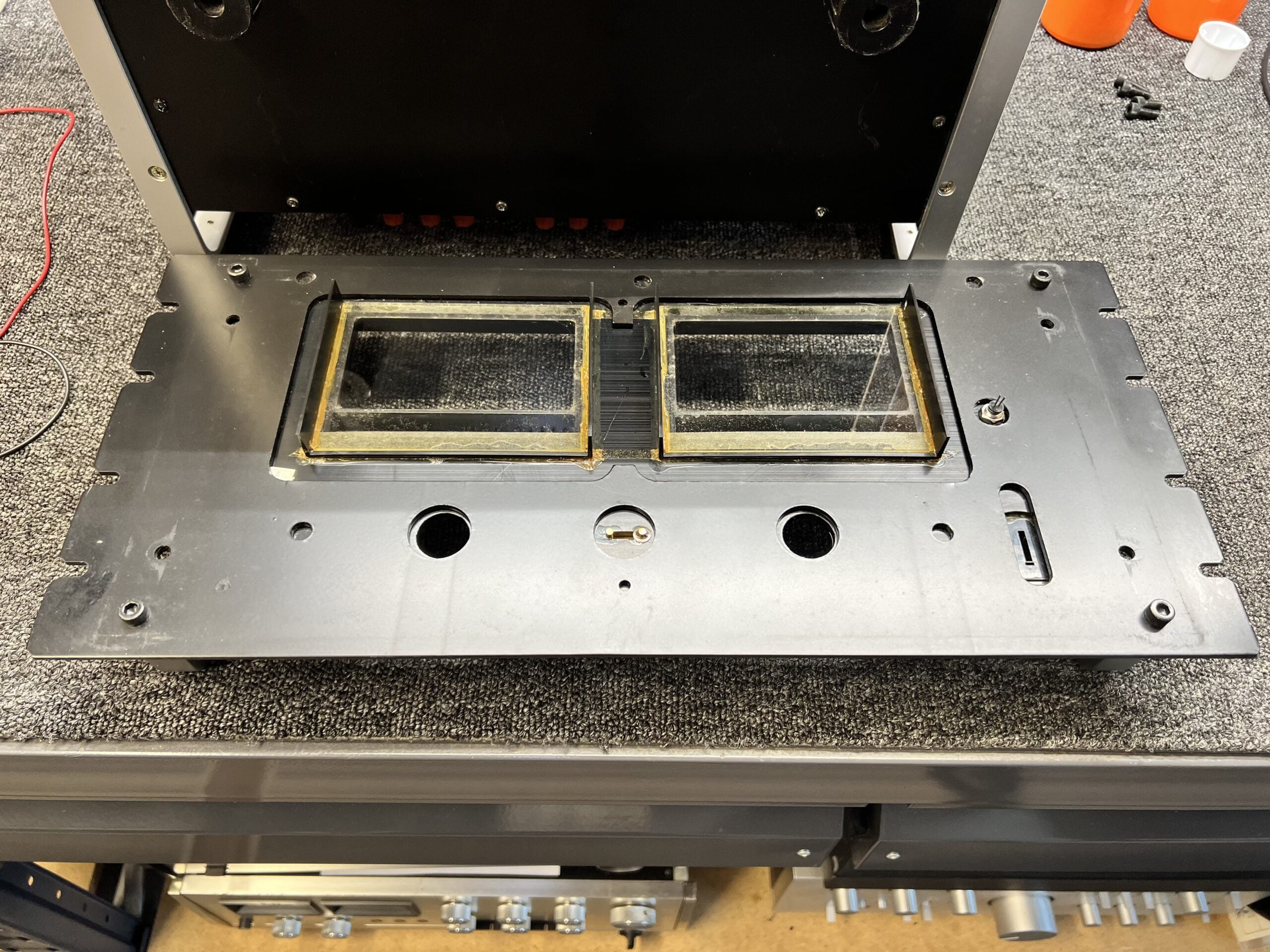
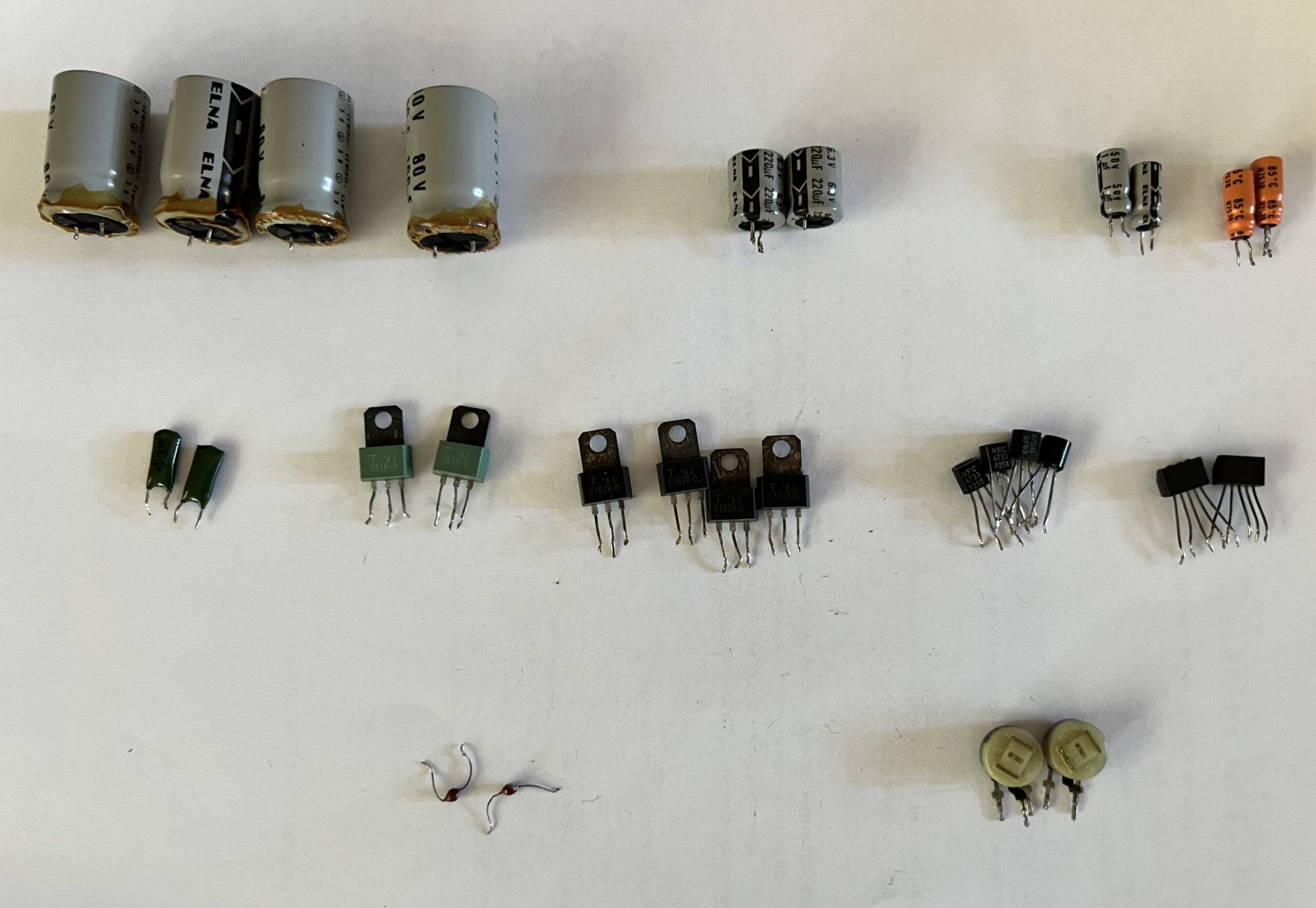
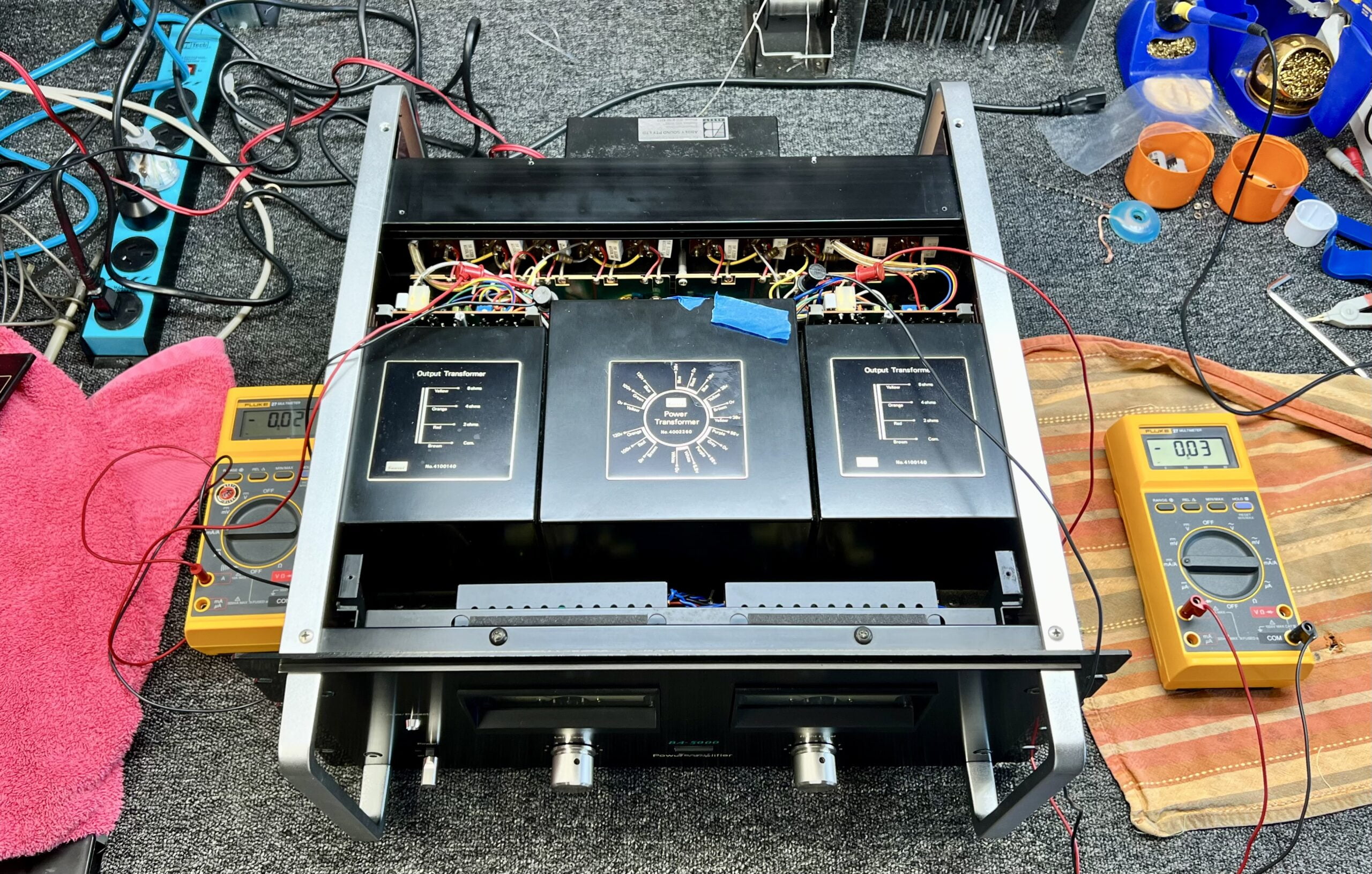
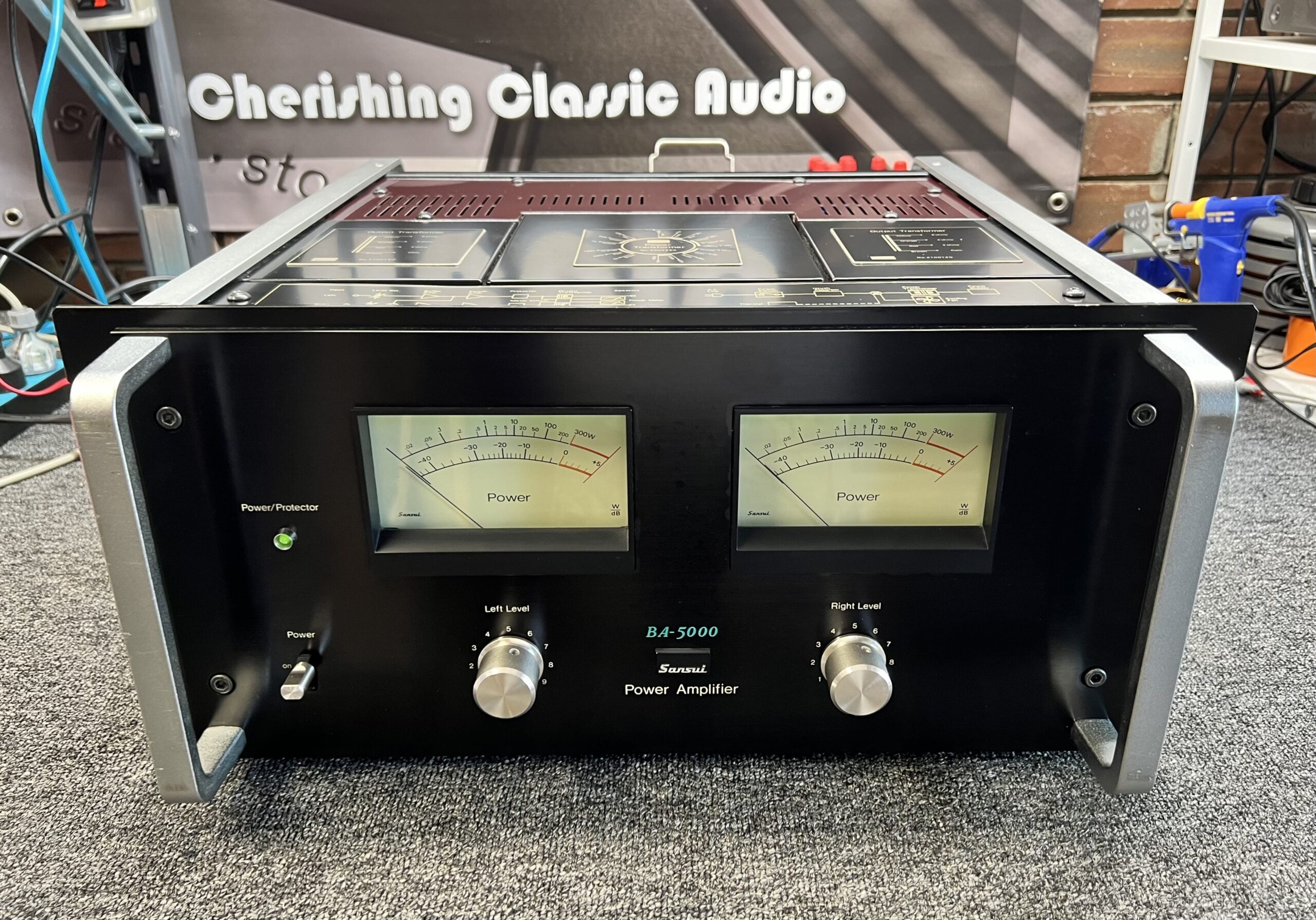
Results & Performance
After resolving the issues with the driver boards including replacing the noisy, leaky small signal and pre-driver devices and generally refurbishing the driver boards and tidying up numerous other little things, this amplifier runs spectacularly well. So well in fact that I couldn’t believe it at first, and neither could Rob when he heard it again.
It sounds massive, completely different. It’s incredible!
Rob R, lucky BA-5000 owner
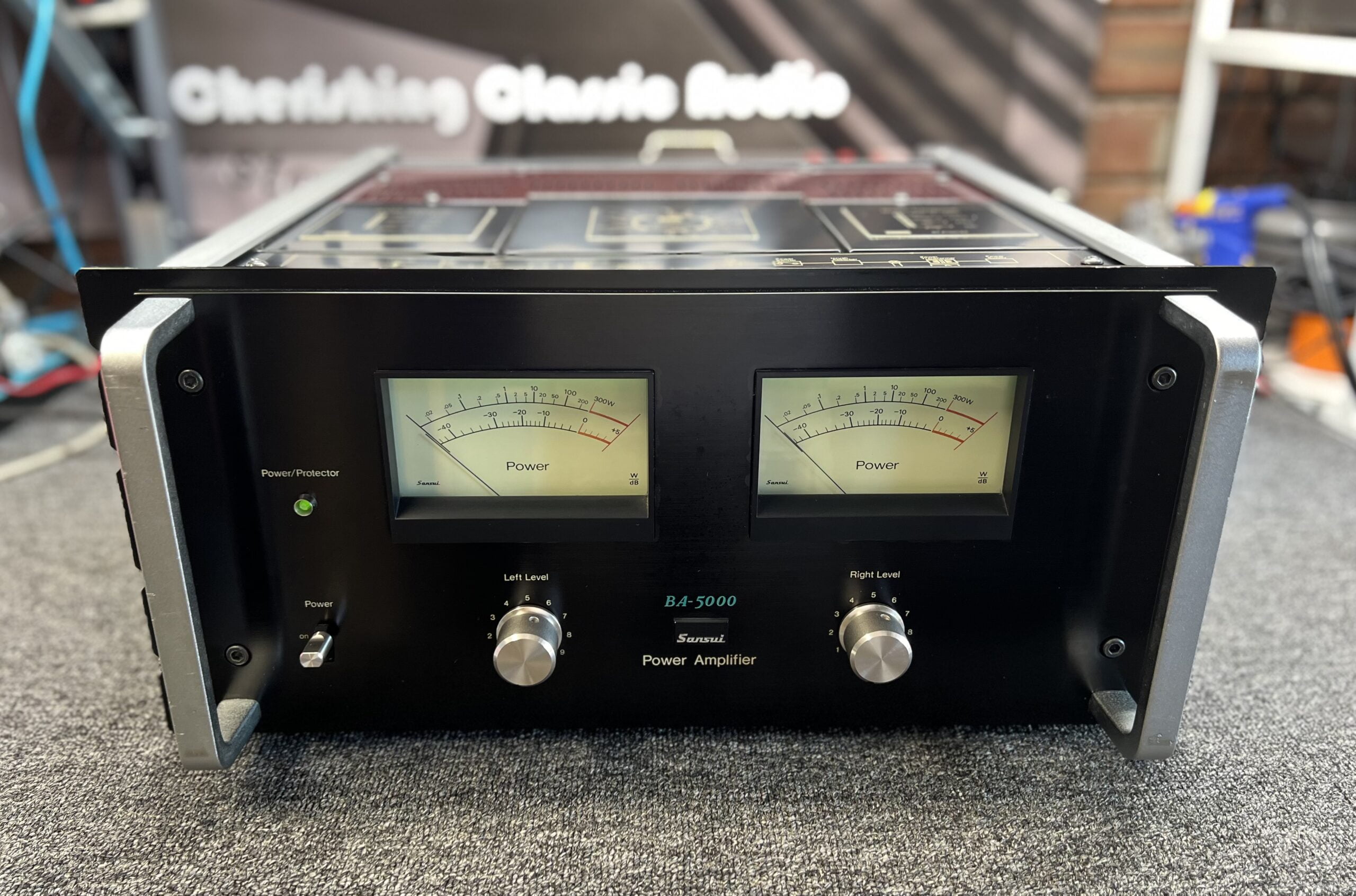
Rob’s a great customer for several reasons, but one that always makes me laugh is that he has that curious hi-fi-related excitement about gear like this that only people like you, me, and Rob can understand. I know you guys are as excited to read about this amplifier as I was to work on it and write this up and it’s the same for her owner. Rob’s reaction after he plugged the BA-5000 in again for the first time and his call to me where he told me about it are partly why I do this work – it’s for people like you, and Rob!
You can read Rob’s full thoughts in the comments section of this article.
I listen to every single thing I work on, and always through my workshop Yamaha NS-10M studio monitors, so I know how things sound and always know when something sounds noticeably better, or worse than usual, or than I’m expecting. All my comments are based on first-hand experience and scientific assessment. Many amplifiers I listen to sound ordinary, but the Sansui BA-5000 is one of the other amplifiers, the better kind that is!
This beauty has air, oomph, delicacy and an immediately obvious wow factor that only really good amplifiers have. The epic scale of things is evident even through smaller speakers like the NS-10Ms, a sign of how well they do their job. The smoothness of the Sansui BA-5000 was immediately apparent though, as was the inky blackness of the background, absolute silence replacing the irritating rushing sound she presented with initially.
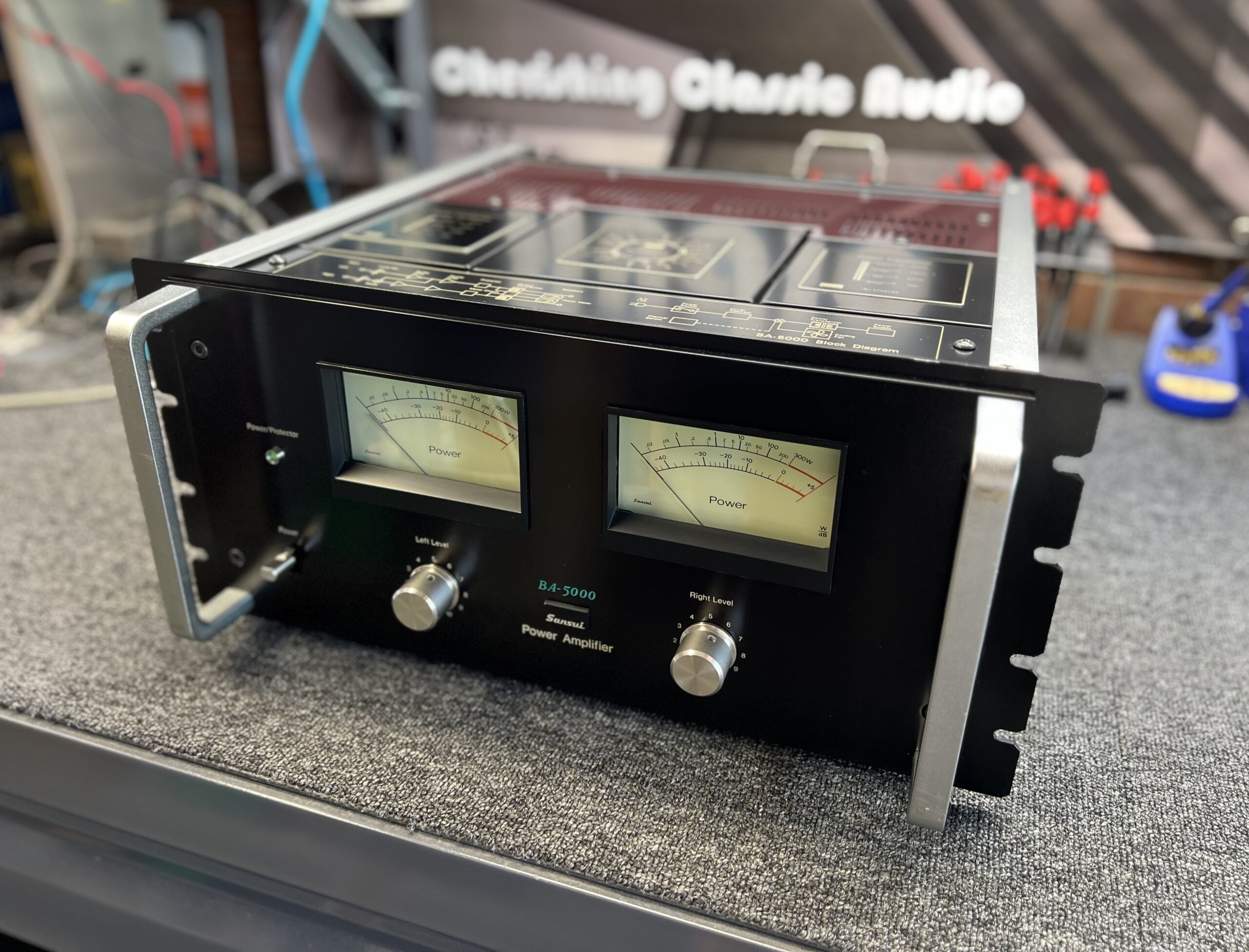
Comparisons
An amplifier like the Sansui BA-5000 is never cheap, it can’t be. When you look at what say four grand buys new though, like a NAD C-298 for example, a dull, plastic, class-D amplifier guaranteed not to last 50 years, you start to understand the real value and timeless beauty of something like the BA-5000. How about the “stunning technological marvel” that is the NAD M23 at nearly SEVEN GRAND..?
All I can tell you is that, as appealing as class-D gear like this might sound on paper, you don’t want to own any of it after about five years. In terms of design, build and serviceability, it’s a long way from this Sansui BA-5000 and a ton of other beautiful hi-fi equipment. NAD are just one of many selling gear like this and if you like their products, no problem. For me though, they set themselves up as a target because of the marketing, pricing and egregious 11kg build for a $4000 class-D amplifier. Reviewers can’t say this, of course, they’d never get to review another piece of NAD gear again if they did.
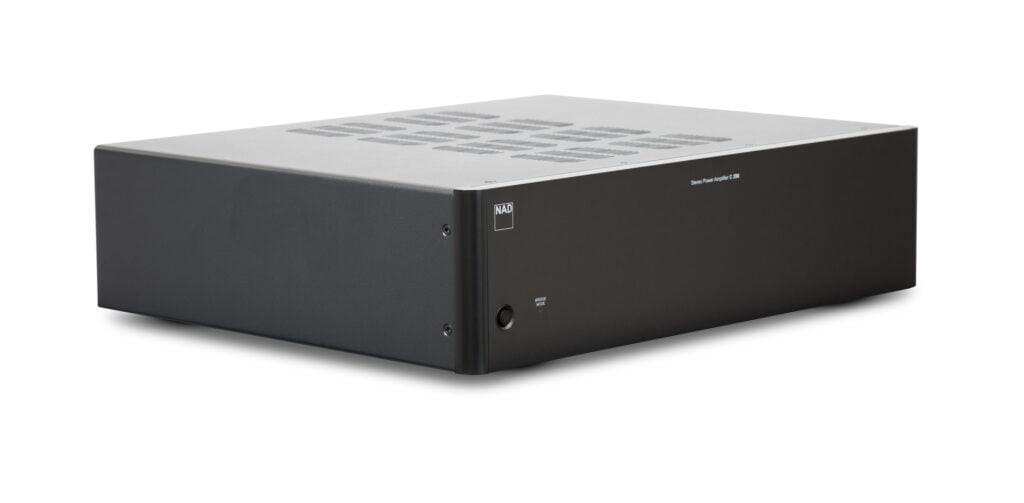
I understand that retailers NEED to sell this stuff and I don’t blame them for that. Writing here though, as an educator, ex-science teacher and independent hi-fi specialist, I have a very different perspective. I DON’T NEED to sell products. I sell my time and expertise, repairing equipment like this and advising people on hi-fi gear, but it sells itself, because of my approach and because I don’t sell plastic garbage. I also give a lot of my time away to write articles like this one for example. I could just as easily choose to fix new gear. It’s lucrative because the stuff is so unreliable, but I choose not to.
But Mike, all the sales guys and magazines say the new NAD gear is great!
People…
Of course they do, they have to! Most will never tell you how it compares to anything that’s not brand new or that they’re not selling, so don’t be surprised by this, use this knowledge to your advantage.
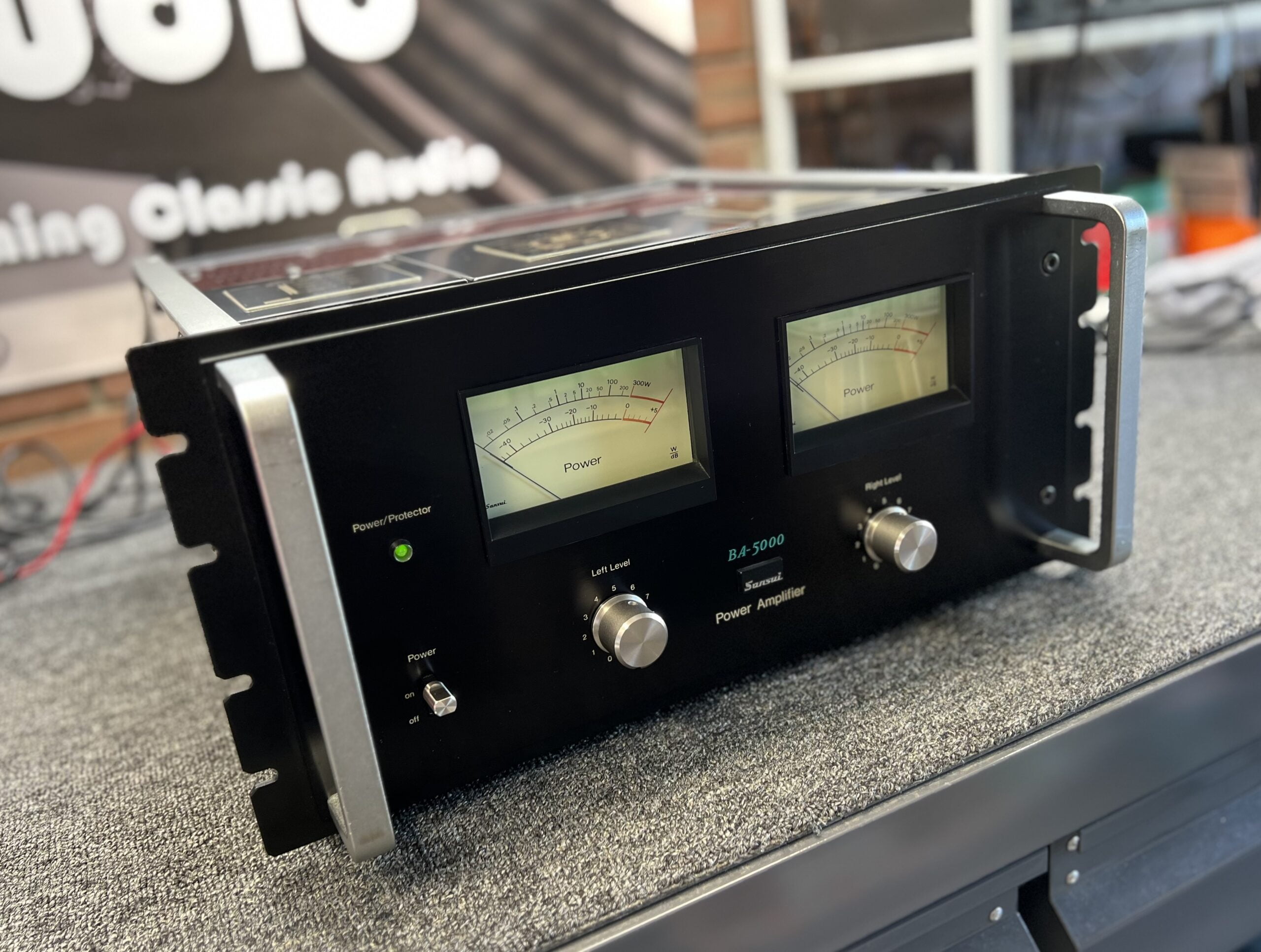
Five grand would also buy you any of a dozen or more other great vintage hi-fi amplifiers like an Accuphase P-500L from the late ’80s or a beautiful Accuphase P-360 from the early ’90s. It would also buy an incredible Krell KSA-100S or Krell KSA-150 for example and many other great amplifiers. These are all better built, but all fall short of the massive 300 Watts into any impedance spec the BA-5000 claims, if only fractionally in the case of the P-500L.
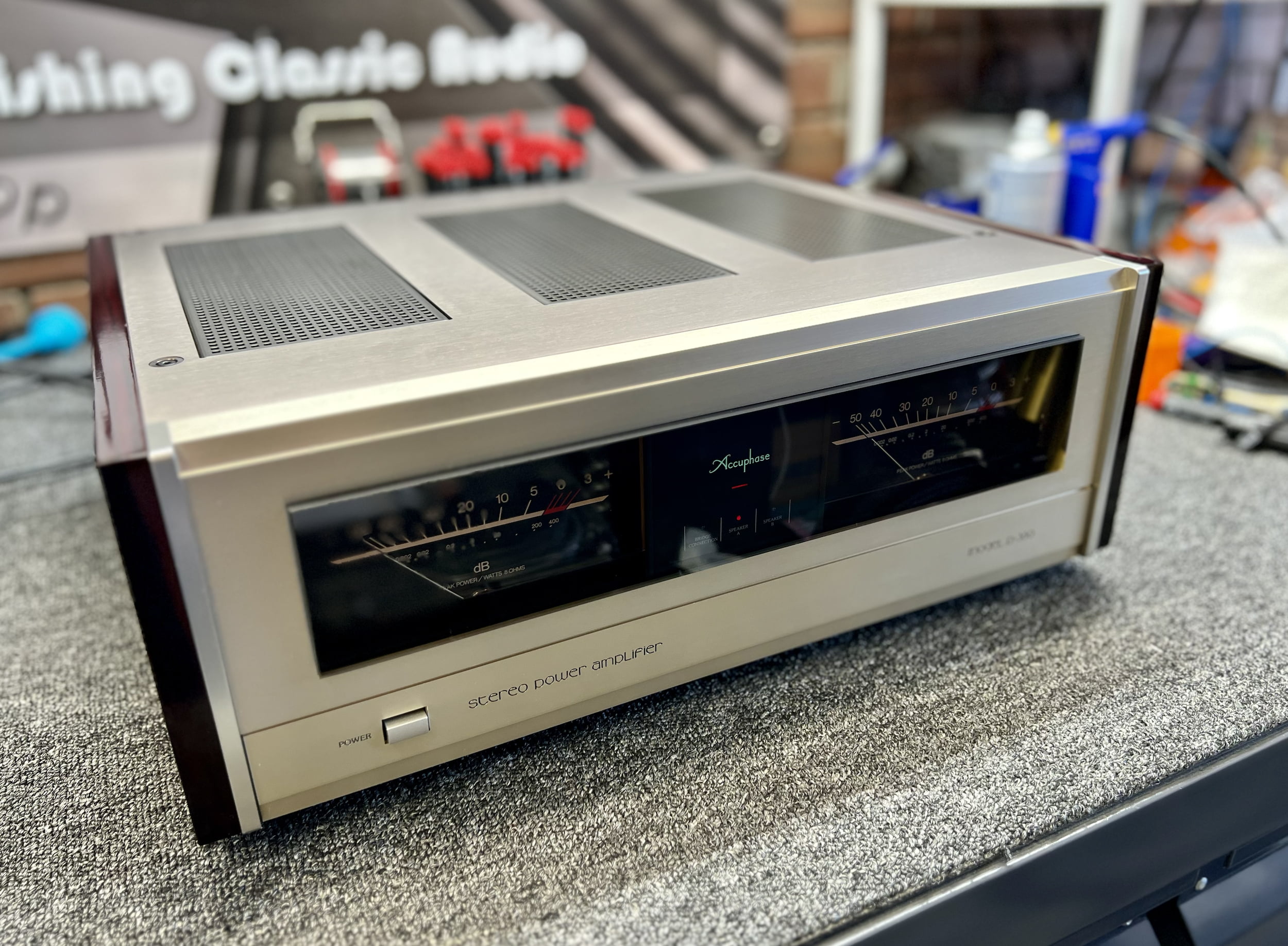
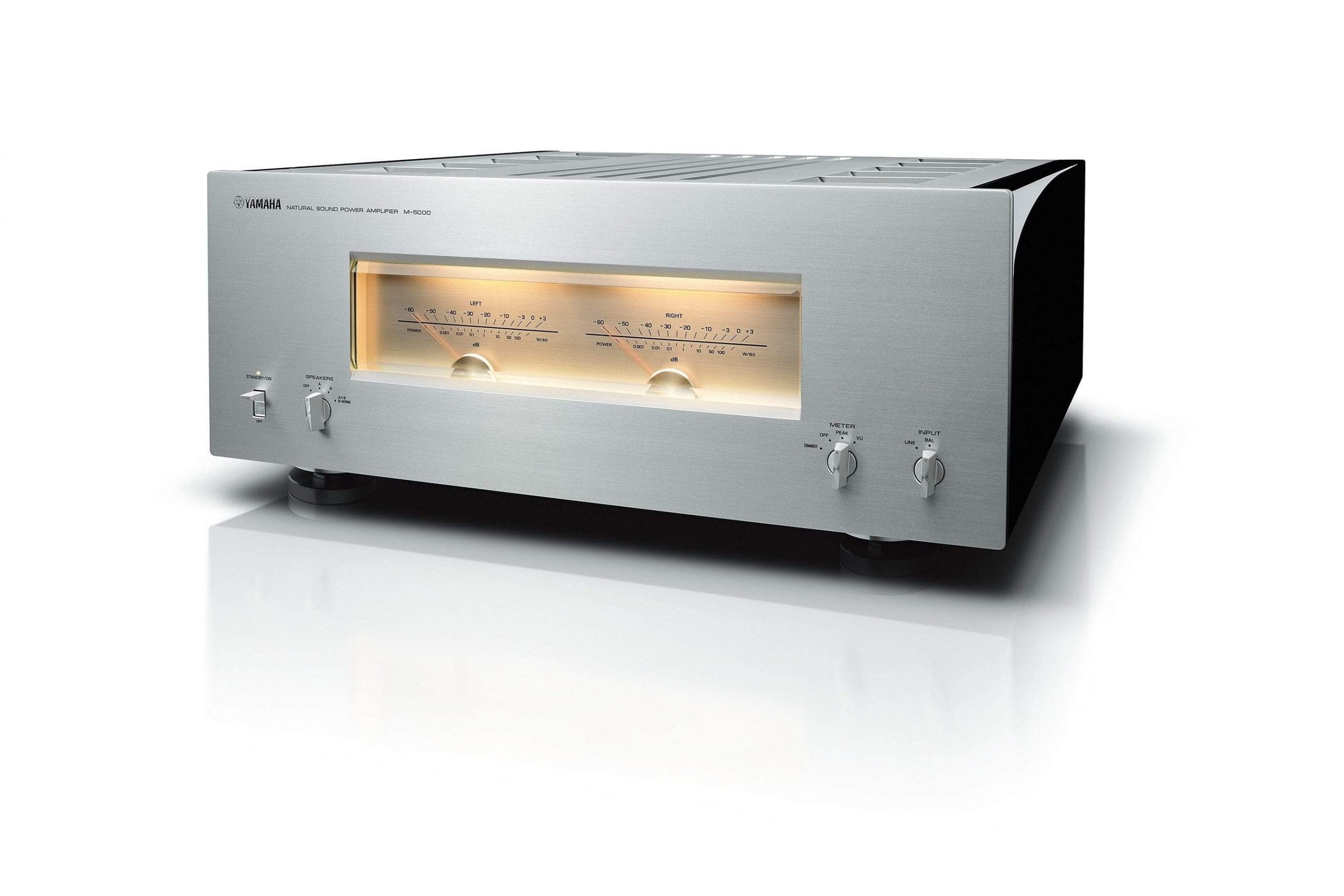
Something more modern we could compare the BA-5000 to is the Yamaha M-5000 power amplifier, a serious attempt by Yamaha to build things more like they used to. The M-5000 is a decent amplifier, and it costs $13,000 AUD. The M-5000 is 100 Watts per channel and 26kg though and I’m sorry, but this attempt ain’t cutting it. That is nowhere near the Sansui BA-5000, but yes, it looks pretty.
A better comparison would be with an Accuphase power amplifier and something that truly is better in every way is the Accuphase P-7500. The P-7500 is a 300 Watt-per-channel, conservatively rated beast, weighing in 49kg. The P-7500 also costs nearly $35,000 AUD. This is a proper modern power amplifier, Hegel, Luxman etc can only dream about being designed and built like this. None of these amplifiers have output transformers like this amazing Sansui BA-5000 though.
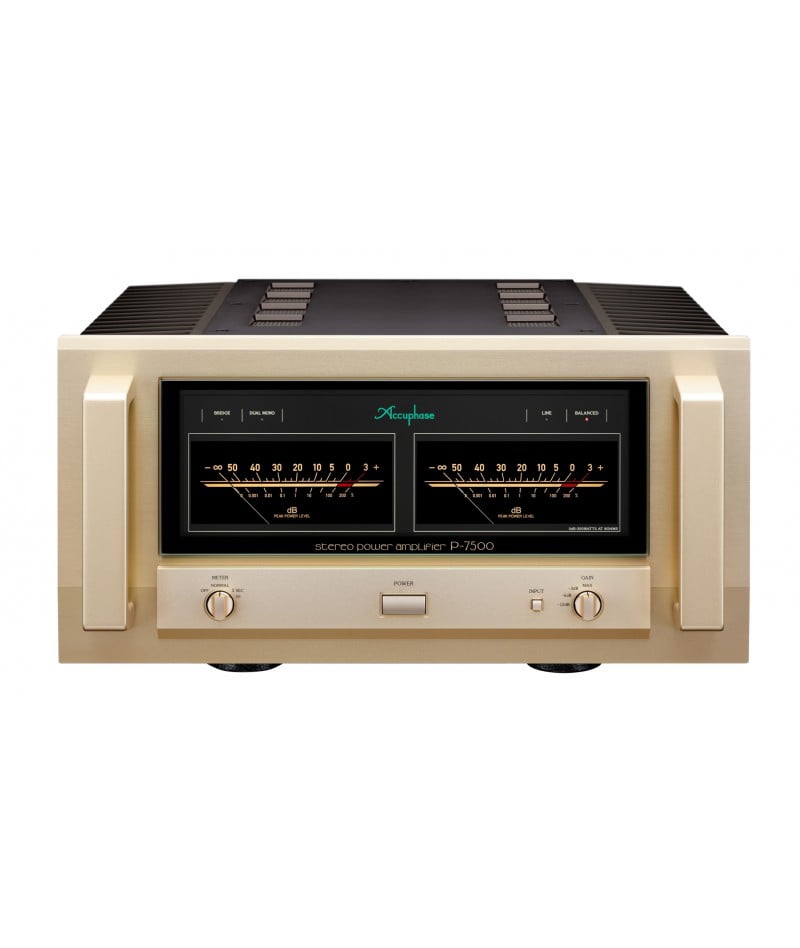
Perhaps the ultimate comparison would be with another transformer-coupled solid-state power amplifier, of which there are very few, mostly made by McIntosh Labs. Consider the McIntosh MC312 power amplifier, a 300 Watt-per-channel beast. It weighs 48kg and, on paper, has a very similar spec to the Sansui BA-5000. The McIntosh MC312 costs $17,000 AUD and is a serious piece of gear.
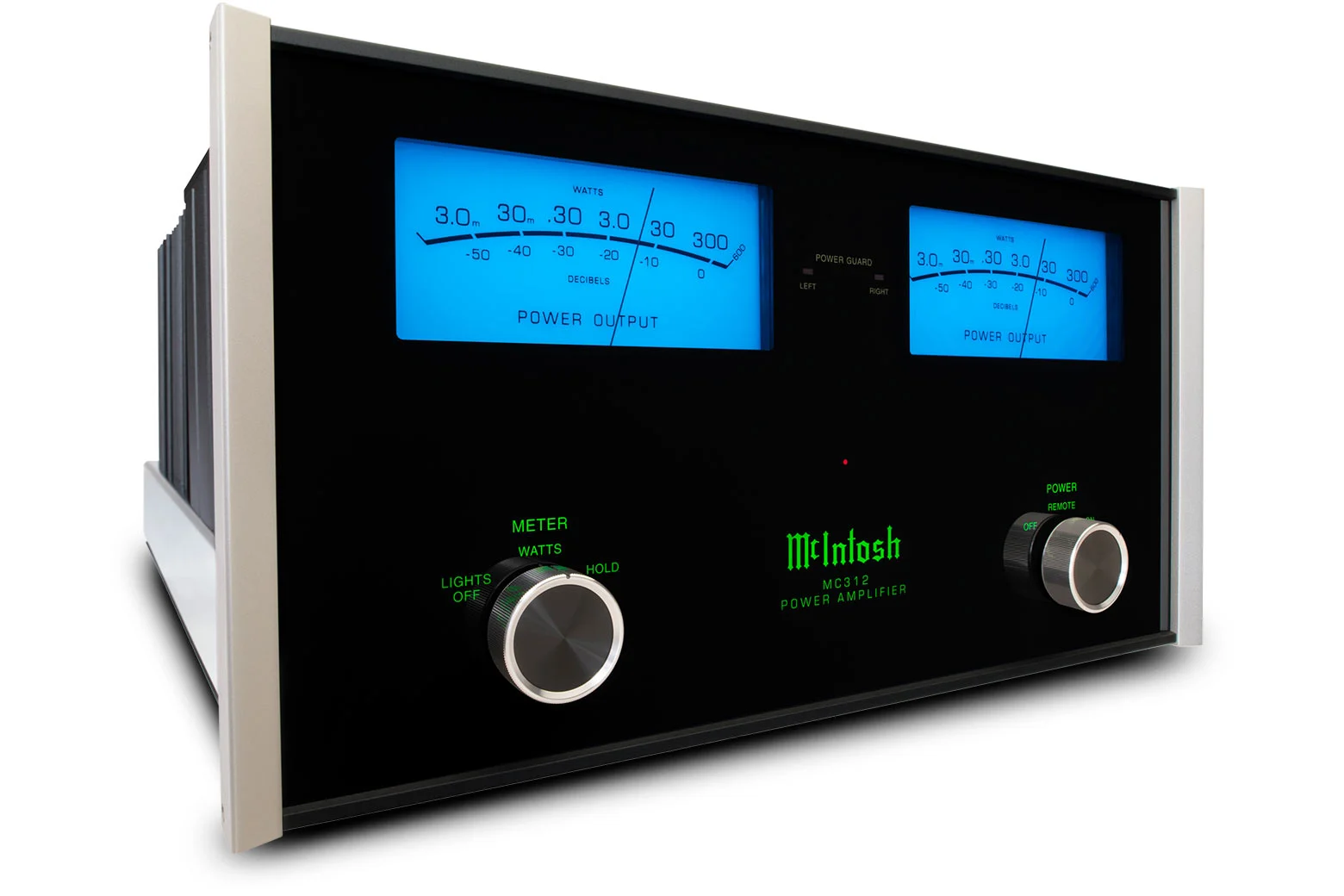
Bottom Line
People think they want plastic Bluetooth class-D amplifiers, but this equipment answers a question nobody ever asked: “How can I reduce box count, build quality, performance and service life in one hit?” Consumers need to question where they get their information, and what that information is. You may never bring a single piece of equipment to me and that’s OK, but I’d like you to own better gear and that means I need to educate and enlighten wherever I can. It’s that simple.
I’ve been writing about equipment like the beautiful Sansui BA-5000 and how it it is undervalued in terms of what it is and does for a decade or more now, but people still ask me questions like: “Mike, is this amplifier really worth five grand?” Let me ask you this – is that plastic NAD C-298 really worth four grand? Two grand? Will anyone remember it in 50 years like the revered BA-5000? The Sansui is great value at $10K AUD and they sell for this.
Should you try to find a Sansui BA-5000? That depends on whether you want the dynamics, scale and performance only an amplifier like this can offer. How about the stunning aesthetics, all-metal build, 50-year longevity and classic hi-fi lore that goes with a statement piece like this? Well, yes, there’s that and all of that is unobtainable elsewhere. Do I think you should get one? Of course, if it’s something you can afford and you dislike plastic! The problem is, you need to find one and then hope that it hasn’t had half the internet try to repair or ‘improve’ it.
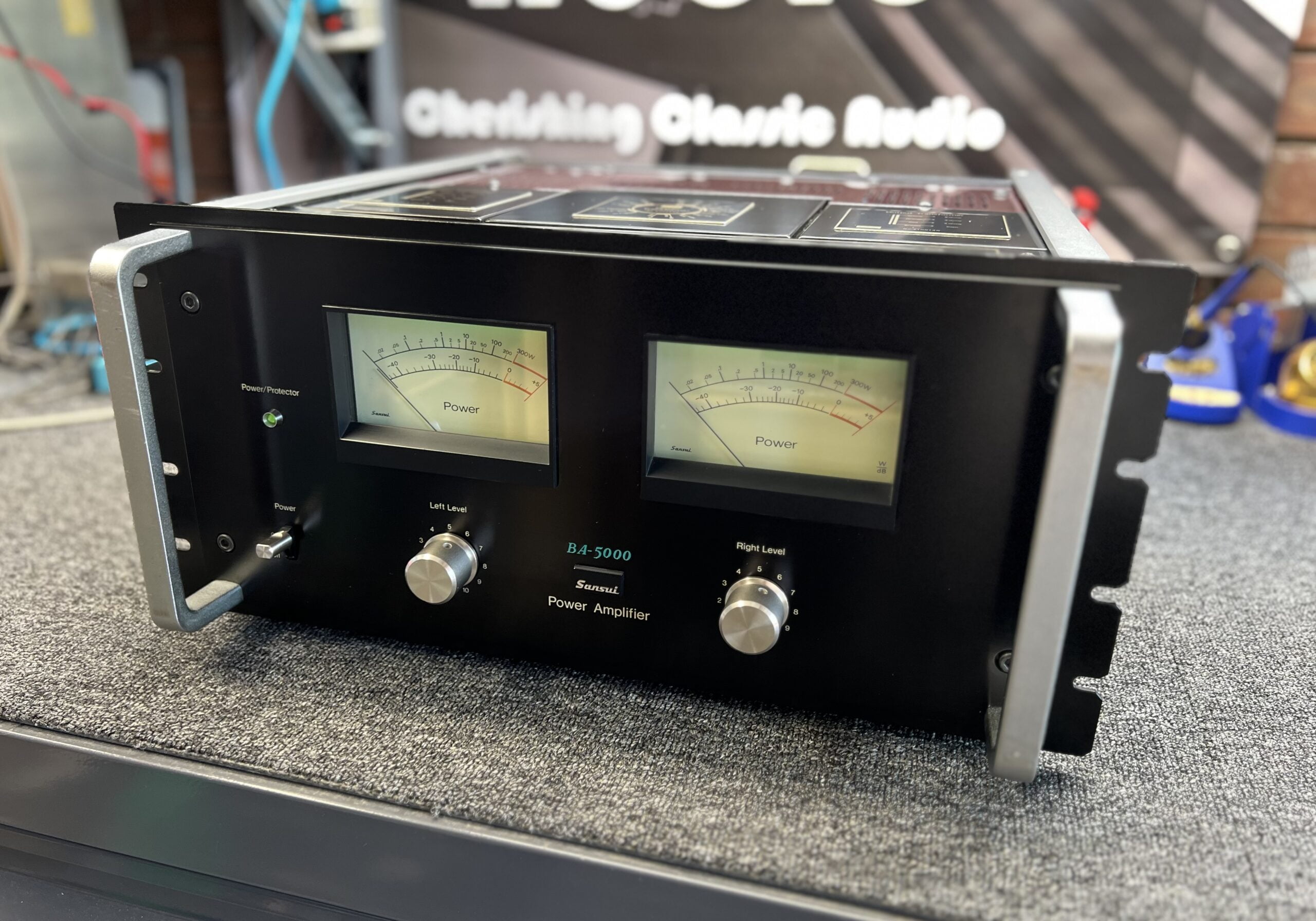
If you want and can find an unmolested Sansui BA-5000 for say $5,000 – 7,000 AUD which is still possible, despite their gold-like appreciation, then you should undoubtedly get it. That’s what my customer Rob did, having chased one for a decade until finding this BA-5000 / CA-3000 pair. Just be sure to have it inspected by someone competent and familiar with how they run, preferably prior to purchase, or with post-purchase leverage/options.
I’ll be writing about the Sansui CA-3000 soon and interviewing Rob to check out the rest of his incredible Sansui collection. In the meantime, don’t hesitate to let me know if you’d like me to look at any of your beautiful Sansui hi-fi gear. Just be prepared to leave it with me. Work like this takes time and I have a fair bit of it at any given moment. Rushing something like this or giving it to a recapper are the worst mistakes you could make with irreplaceable equipment like this.
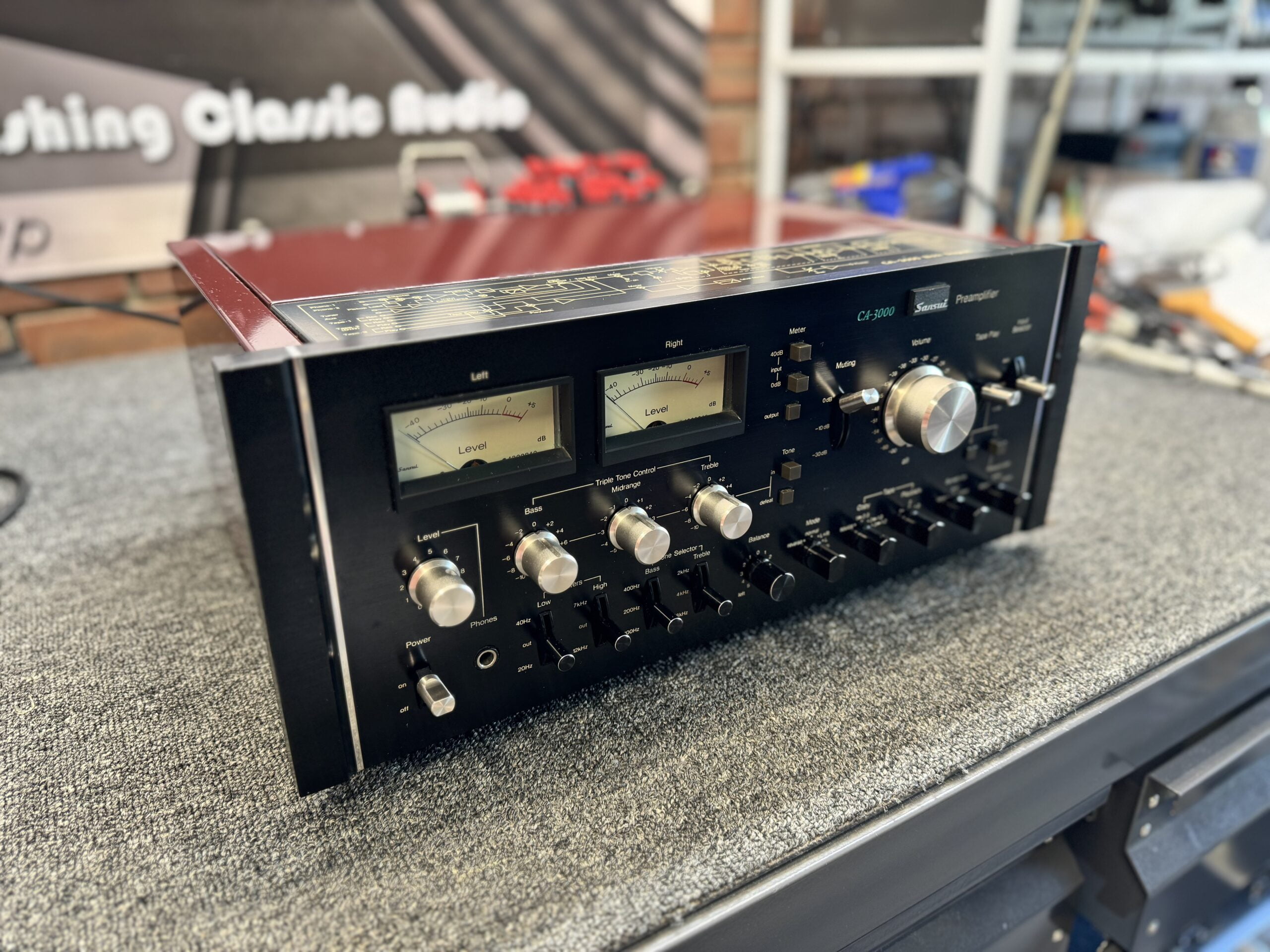
PS
Don’t forget to tell me what you think about the beautiful Sansui BA-5000 and articles like this one. Do you want more like this? Perhaps there’s a particular something you’d like to see me write an article on? Let me know in the comments below.
Sansui BA-5000 Power Amplifier
$5,000 - $10,000 AUDPros
- Incredible build and performance
- Transformer coupling delivers unique sonics & speaker safety
- Stunning looks and longevity
- Appreciating like gold, as per all great equipment
- Almost zero plastic and repairable even now, in 2024
Cons
- Needs specialist knowledge & care
- Many have been tinkered with, reducing value
- Transformer coupling has some theoretical drawbacks
Discover more from LiQUiD AUDiO
Subscribe to get the latest posts sent to your email.

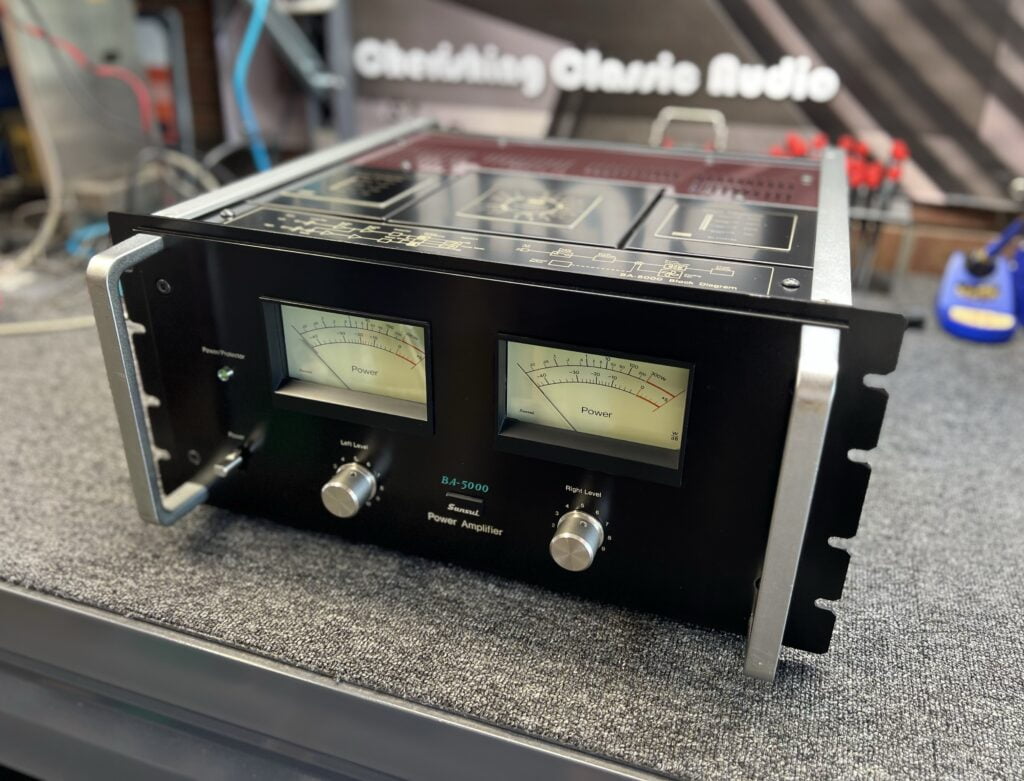


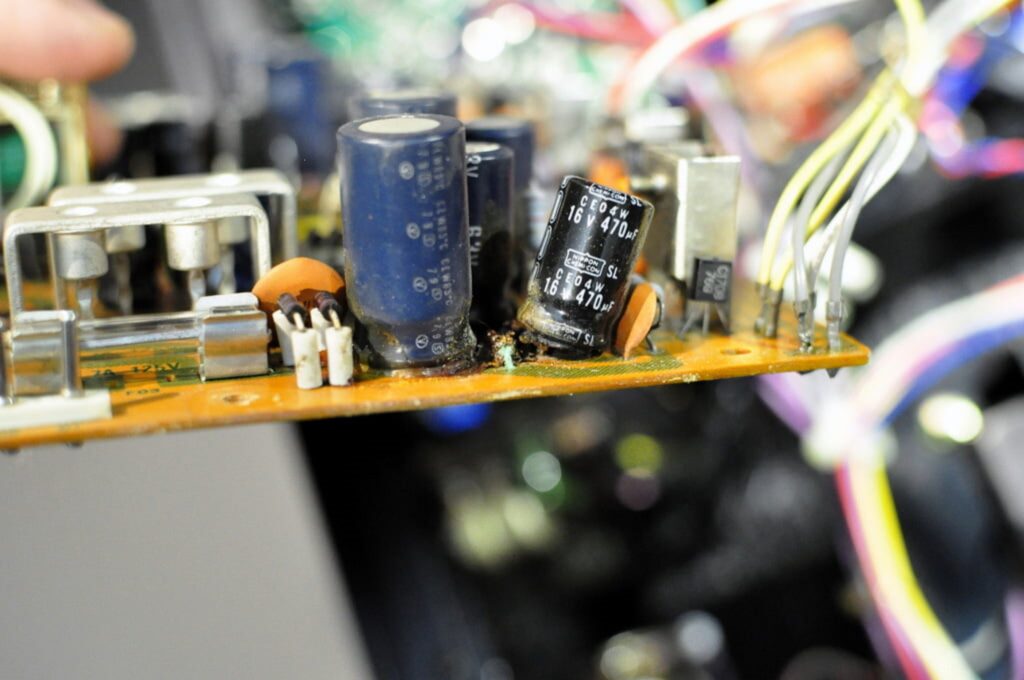
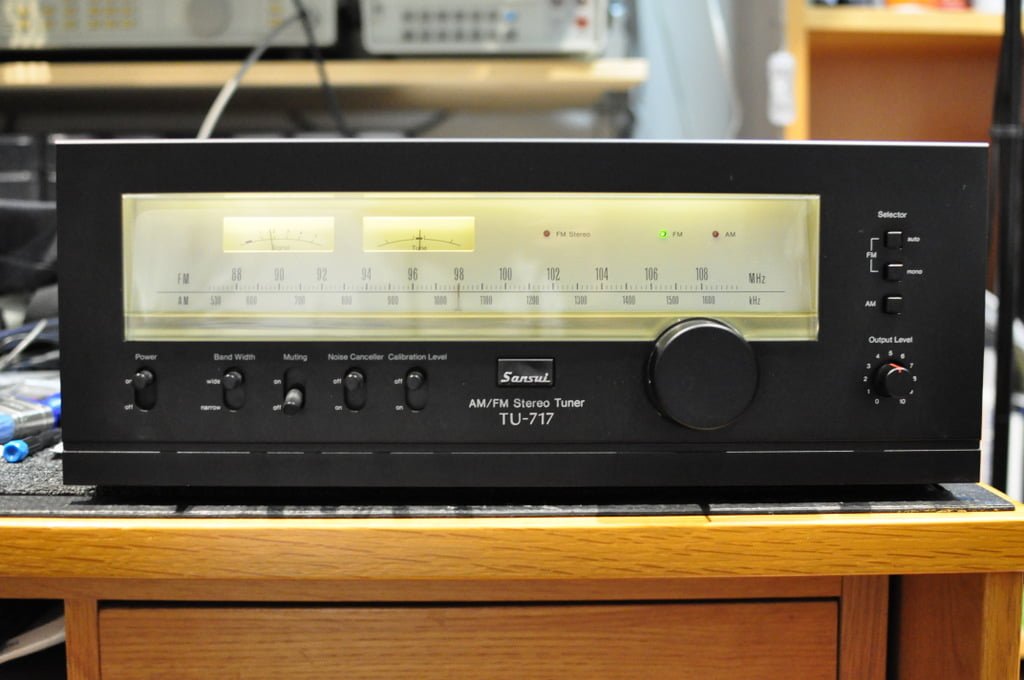

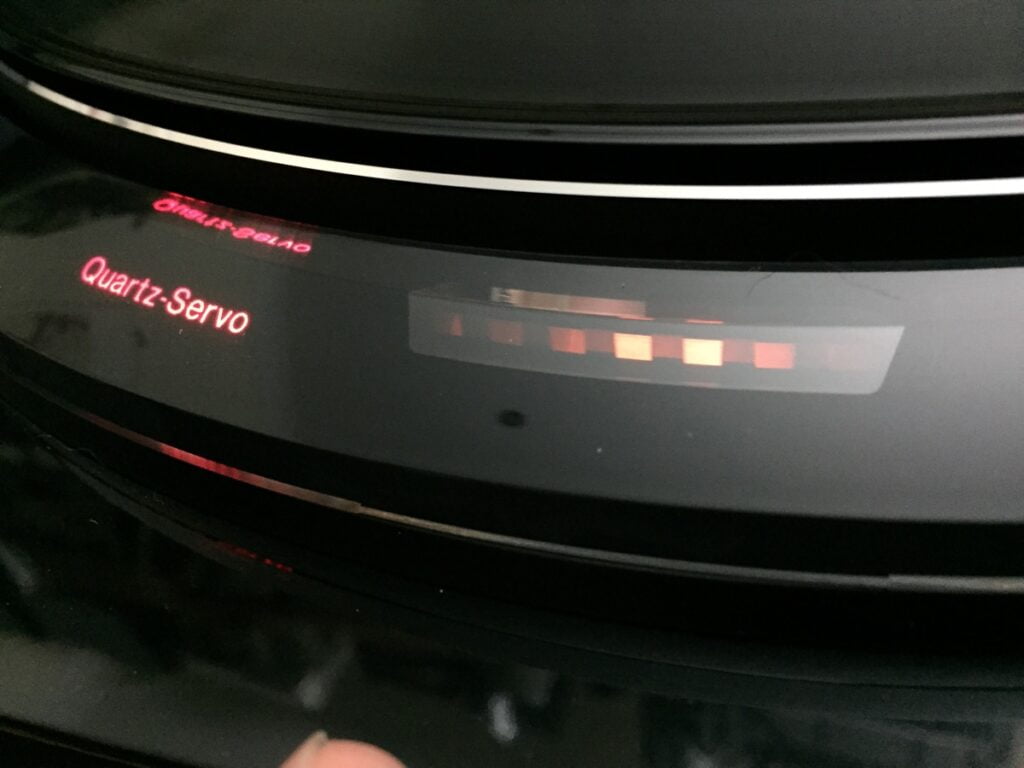
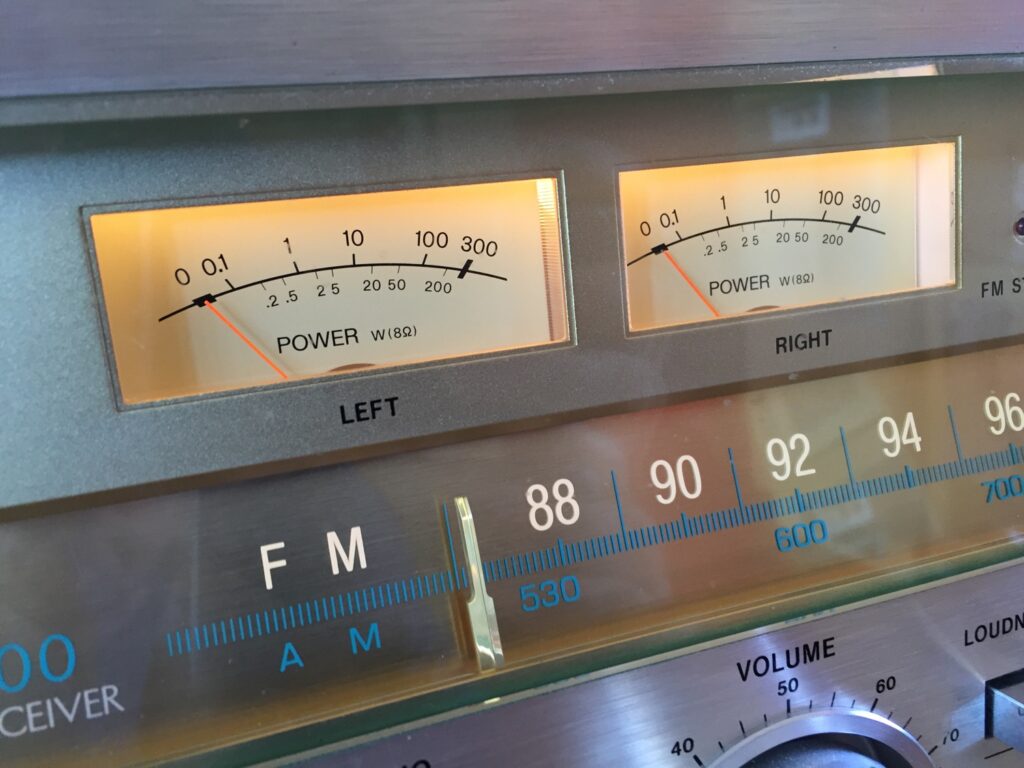
keep up the outstanding work Mike. best in Australia at what you do. you also have integrity, which is somewhat rare, not just in business, but in life.
Thanks so much Tony, can’t tell you how much I appreciate feedback like this!
Wow. Do the streetlights dim when that beast is running? Thanks to you and owner Rob for sharing.
Thank you Rob! Yes there is a noticeable current impulse at turn-on!
Output transformers. On a solid state amp? Why not whack some extra wheels on a Porsche, in the hope that it will handle better?
Output transformers do several things:
Yes, they ensure that speaker damage is rare or non-existent.
However, they also:
* Shift phase
* Damage frequency response
* Increase non-linear distortion
* Increase output impedance. In the case of the BA-5000, dramatically so. This will alter frequency/phase response in many/most loudspeakers. Try running the amp with almost any ESL. The result will be a wildly varying frequency response.
* Increase cost significantly
* Increase mass
* Decrease load invariability. The vast majority of loudspeakers want to ‘see’ a ‘pure’ Voltage source. A tapped output transformer is the antithesis of this feature.
Hi Trevor, Happy New Year, I trust you are well and I’m glad you’ve enjoyed the article! This is an unusual design, your observations are noted and I mentioned some of this in the article and may elaborate as time/energy allows. This article was mostly about caring for and repairing beautiful equipment like this, what this actually incredible amplifier represents as a whole and its performance into typical, real-world loads. With regular/typical speakers, it sounds absolutely amazing, regardless of any potential limitations, and I think the owner is as surprised as I was. Thanks again for visiting and I hope that 2024 is a good one for you.
Amazing work again. I have the Luxman M-4000u and would not hesitate to send it to you interstate when its ready for a service.
Thank you, always happy to assist where I can!
Hi all, my name is Rob and I am the owner of this awesome beast. First of all I would like to thank Liquid Mike for his continual support he has given me with my many Sansui repairs and continuous questions which always he replies with patience and in depth answers which I am sure at times would love to roll his eyes at but never does. When I brought this home and connected it up I was little disappointed. Mike did a total refurb on my BA F1 a few years back and when I did a comparison between the two the BA F1 had the edge. I informed Mike and his answer was “that can’t be right you had better bring it in and let me have look at it. It should be noticeably better than the BA F1.” Anyway I dropped it off and when I got the call to pick it up I was greeted with a beaming Mike. “I think your going to be impressed when you bring this home now” was his answer. So away I went rushed home and connected her up and WOW! It honestly was a totally different amplifier. The clarity and separation of sound compared to before was chalk and cheese. Thinking I was just being an excited school kid I re connected up the BA F1 for the comparison and it reconfirmed my result. They now really couldn’t compare. I rang Mike and told him the result and I think he was actually happier than I was. This to me is why I hold Mike in such high regard as a tech. Not only does he repair / restore gear to a very high level but he genuinely gets excited and gets happiness out of getting the result which we are hoping for. This was not the end of the story. I was getting a better result using my CA F1 pre amp than using the CA 3000 I had purchased with the BA 5000. Another phone call to Mike and you guessed it. “That can’t be right you had better drop of the CA 3000” Again I was greeted by a beaming Mike when I picked it up. “Let me know what you think now” Off I went connected it all up and WOW! number 2. This is by far the best sounding Sansui I have heard at this point. Big call but I think it’s better than my AU X1 that Mike did a full refurb on a year ago.
Thanks for this great article also. Once again I have been informed and learn’t a bit more like I do each time you post something. Your articles are awesome to read and bring out the excitement in the product you are reviewing.
By the way Mike isn’t just a top tech he’s also a top bloke. Thank you Mike your a legend!
Good on you Rob and thanks so much for the kind words and for sharing your thoughts on this one. It’s always a pleasure working on equipment like this for you for the reasons I mentioned and more so when the results are as great as they were here. You took a big chance on purchasing this pair and big stakes earn big rewards with gear like this in my opinion. It’s an incredible piece of gear. Anyone who hears this amp couldn’t help but be immediately impressed by it and I think for a collector like you with a great ear, this is the perfect result. It also really highlights the need to see and hear gear like this, vs talking about it. I’m looking forward to writing that article about your collection and to completing stage two of the overhaul of the BA-5000 for you!
Greeting and congrats on the beautiful beast. So at first you prefered the F1. So what differences did you find sonically after the servicing? I have a F1 and do like it but could use the extra power. I agree that the output xformers would normally not add to the final sound quality.
Thx,
DD
Hi DD, I assume you are asking this of Rob the owner so I’ll wait for him to reply!
Hi Mike, It’s nice to stumble upon such a fine site. I’ve been running a F1 since the mid 90’s. Not long ago I ended up switching to speakers requiring up around 250+w. So just recently I noticed the 5000 and thought oh wow. I’ve had a TU-9900 for the last 10yrs and it has reset me. I could swear at times a genie presents herself. It’s as if it has blood pumping. Can’t say that I’m much of a McIntosh fan. But I am wondering what the 5000 sounds like compared to a similar xformer coupled Mac.
Thanks DD, very kind of you, and I’d suggest listening to as much of this stuff as you can so that you have the most informed ears. Rob, the owner this BA-5000, also owns a BA-F1 and AU-X1 that I’ve overhauled for him. He loves his BA-5000 but my memory is that he might slightly prefer the AU-X1 out of his vast Sansui collection. There are, of course even better sounding designs outside the Sansui ecosystem, and possibly better within it, like the B-2301, so it really comes down to many factors including aesthetics, taste, system context, budget etc. For me though, the BA-5000 is an absolute beast and a lovely sounding amplifier. Also keep in mind the Rob’s has not yet been fully overhauled, so it will undoubtedly sound better yet!
What a spectacular amp!
Not sure I would every be able to afford one of these, but fortunately my AU-X11 is running very well after your help in ensuring it was properly biased. Usually I run it in power amp mode, driven by my Accuphase C-202 pre. I am still looking for a nice Accuphase power amp to go with the C-202. Cheers!
Absolutely agreed! The AU-X11 is a spectacular sounding unit in its own right, so that’s a nice combo you have there. You might also like a well cared-for BA-F1/CA-F1 combo. I suggest you hunt down an Accuphase P-102 class A power amplifier to match the C-202 though as this is a great partnership. The P-102 is an amplifier bargain at current prices too.
Geez what a beauty
Right on Russ, this is one of the most beautiful looking and sounding amplifiers I’ve had the pleasure of working on.
hello mike, i always enjoy to read your every article. i have Phase Linear 400 Series two and some Sansui. Have you ever repaired a low power sansui like AU-101? i have a trouble with it
Hi Candra and thank you for your question. I actually work on a ton of smaller Sansui and other brand amplifiers, I just tend not to write about them as much. I repaired an AU-101 a couple of months ago.
I love your candid opinions Mike. It is refreshing to be told that I can obtain better value from something second-hand and what is and isn’t good value. We are all passionate readers of your insights from a technical and scientific perspective. Watching your videos and descriptions of servicing hi-fi gear makes it plain that you are exposing your expertise to criticism and you wouldn’t do so unless you were perfectly comfortable with your expertise and the science of each machine and component you describe.
Can you write something about the pros and cons of buying second-hand goods from overseas – eg Japan 100V – that don’t necessarily suit local voltages/amperes and having to introduce step-down/step-up transformers. Obtaining the relevant service manual in advance of an overseas purchase seems a necessity to me [but you might disagree, of course] to performing certain repairs/modifications.
On the issue of buying Accuphase hi-fi items from overseas there is the very real question of the availability of obtaining support from Accuphase in Australia or obtaining Accuphase parts in Australia or trying to access them from Japan.
Keep up the brilliant posts and videos please.
Thanks Steve, much appreciated and it’s great to know that you are finding the site helpful. My goal is to educate and enlighten, in keeping with my science/education background, so I try to keep opinion to a minimum and deliver as much straightforward factual information as possible, rather than the conflicts of interest and misinformation unfortunately so common in this space.
I’ve written a couple of FAQs about Japanese voltage equipment and step-down transformers so check those out:
https://liquidaudio.com.au/faq/can-i-use-100v-equipment-in-australia/
https://liquidaudio.com.au/faq/i-purchased-equipment-from-japan-and-it-blew-up-can-you-help/
When buying Accuphase equipment from Japan, people should engage an independent Accuphase specialist as anything sold outside of its original market will not be supported by Accuphase Japan or the official repairers in the country of purchase. The lack of factory support for equipment purchased outside its intended market is true of other brands too of course. Service data is critically important for technicians, less so for owners. I have an extensive library of Accuphase technical documentation and support most legacy Accuphase gear in terms of service and repair.
More articles and videos coming!
I enjoy very much reading your articles, please keep up the good work. I did a quick search on my local hifi buy sell forum, the last transacted price recorded was about AUD3000 but it was like 10 years ago. I wonder how much would one decent unit will be worth today’s money.
Thank you! I’ve given some guide prices in the details, this decent example I wrote about for example sold for 5 – 6K, depending on how you view the owner’s transaction when he purchased it.
You had me until you said Mac was a possible contender for your unit. Over the last 20 years Mac build quality has gone to crap the Yamaha build quality is better
The commenter may have been referring to older Mac pieces closer to the BA-5000’s vintage, I can’t recall the original comment. I agree though regarding modern MacIntosh gear and I definitely don’t recommend it.